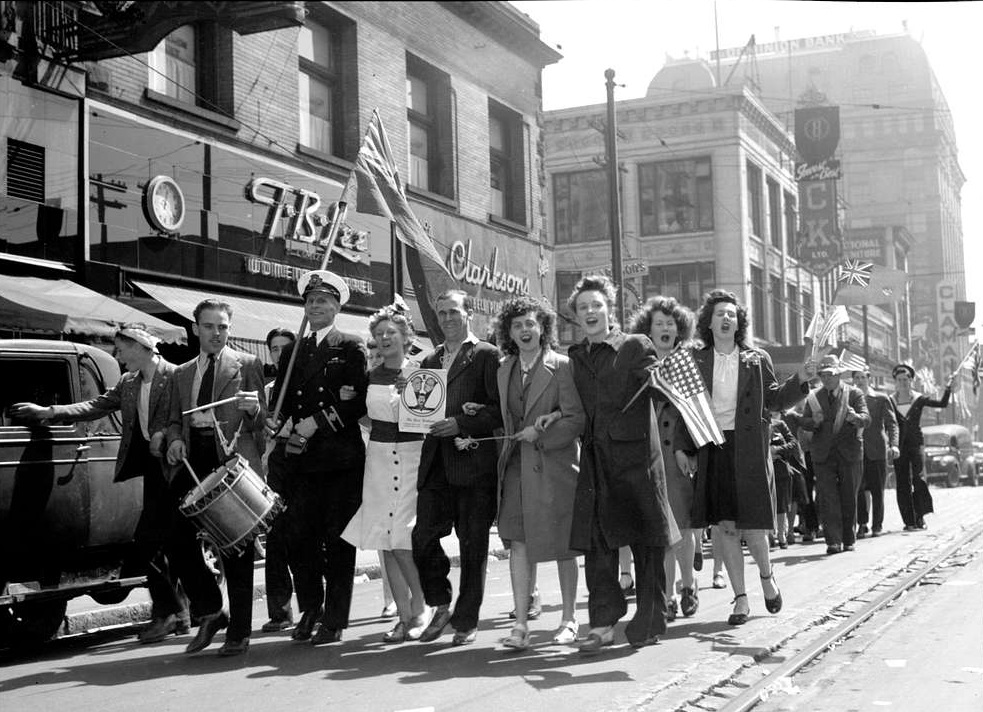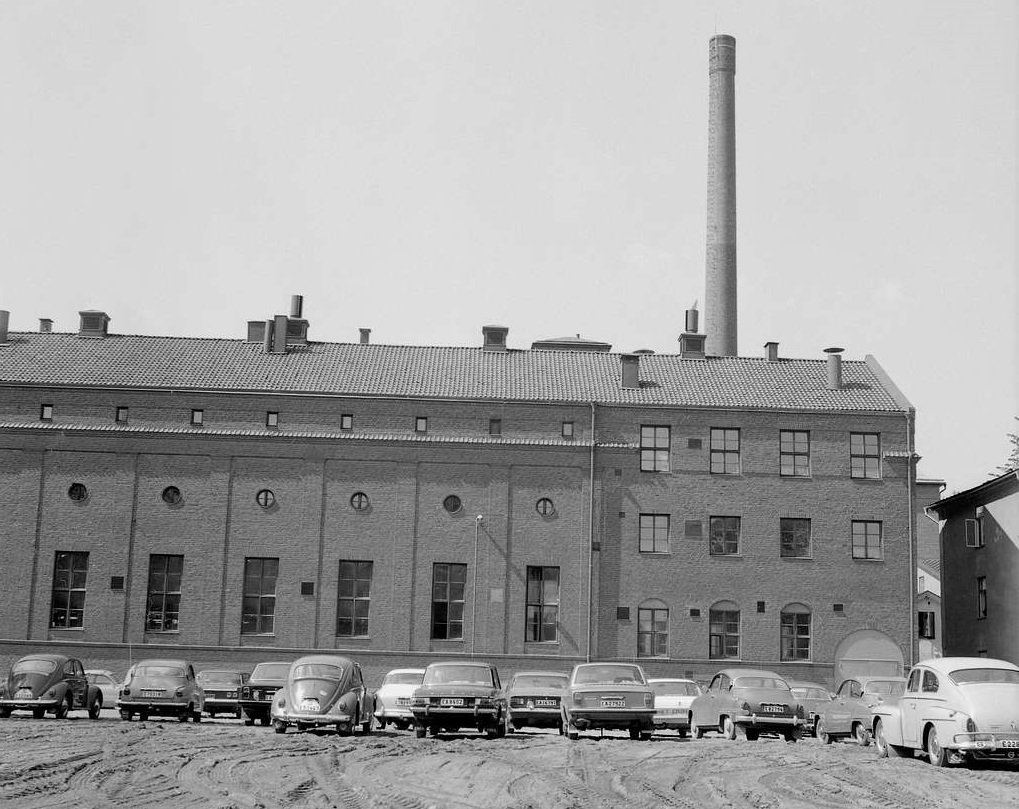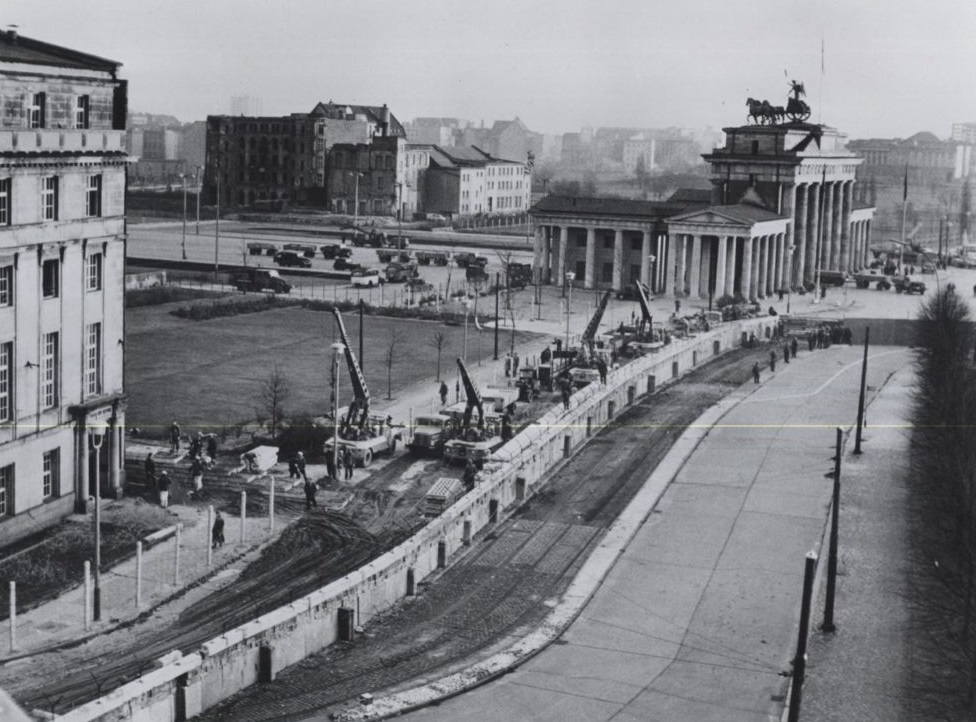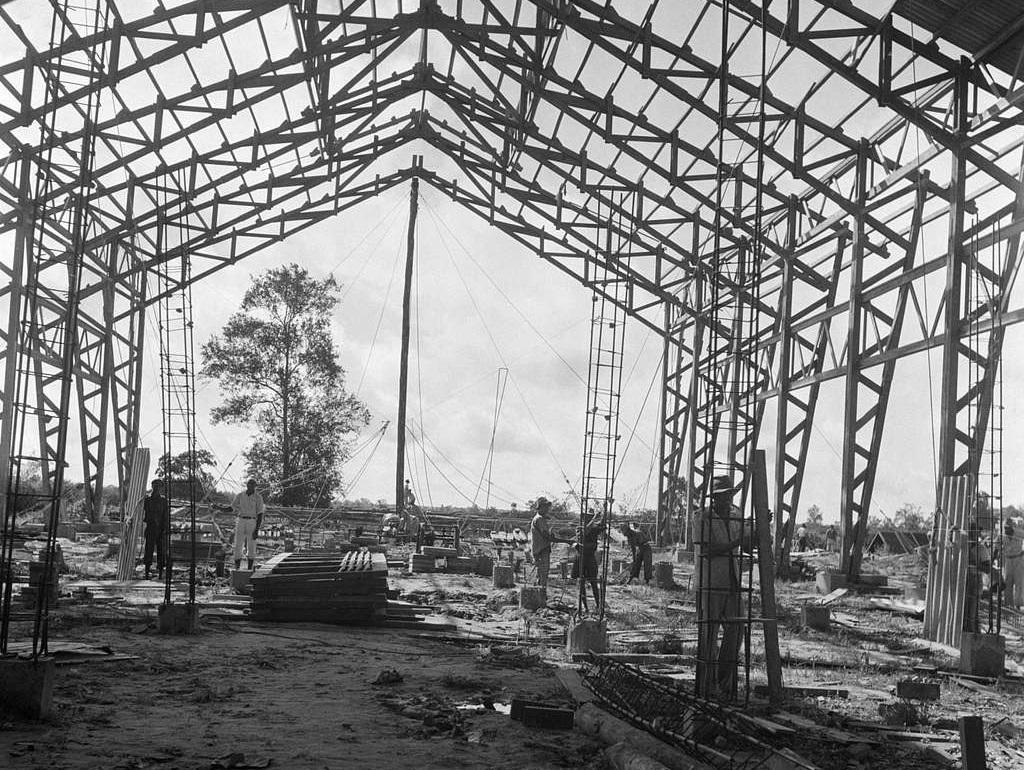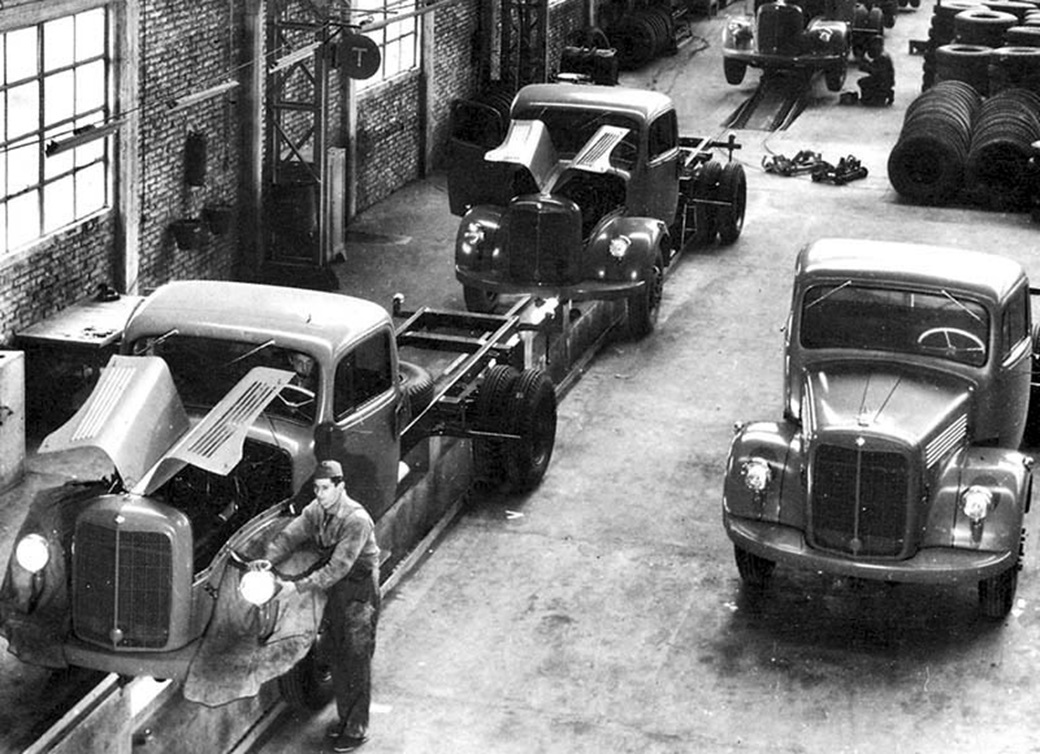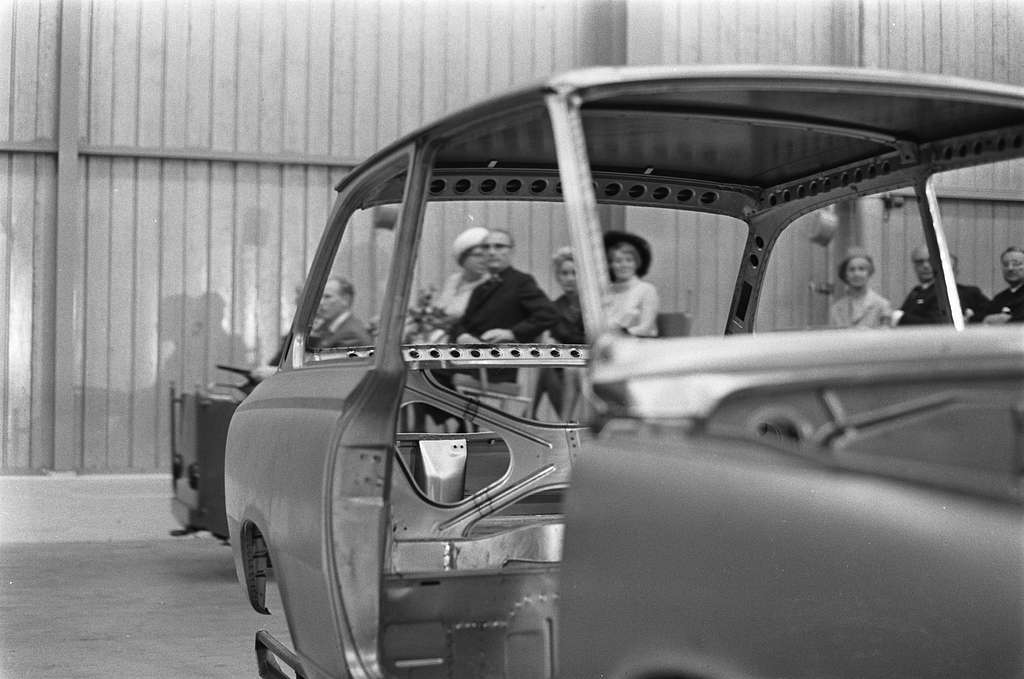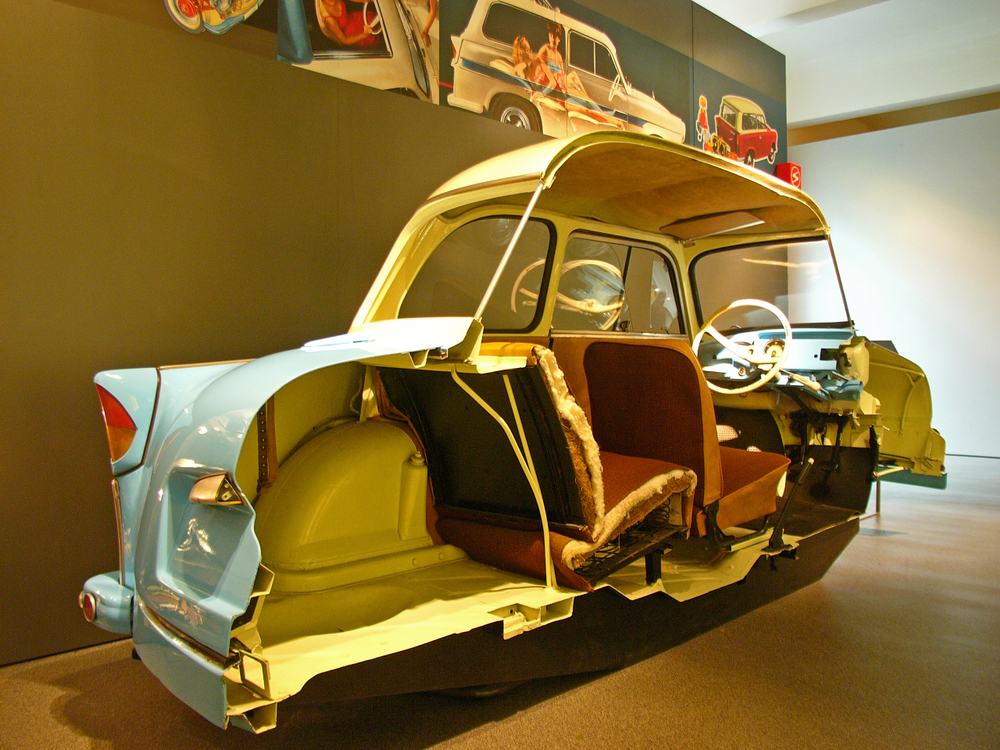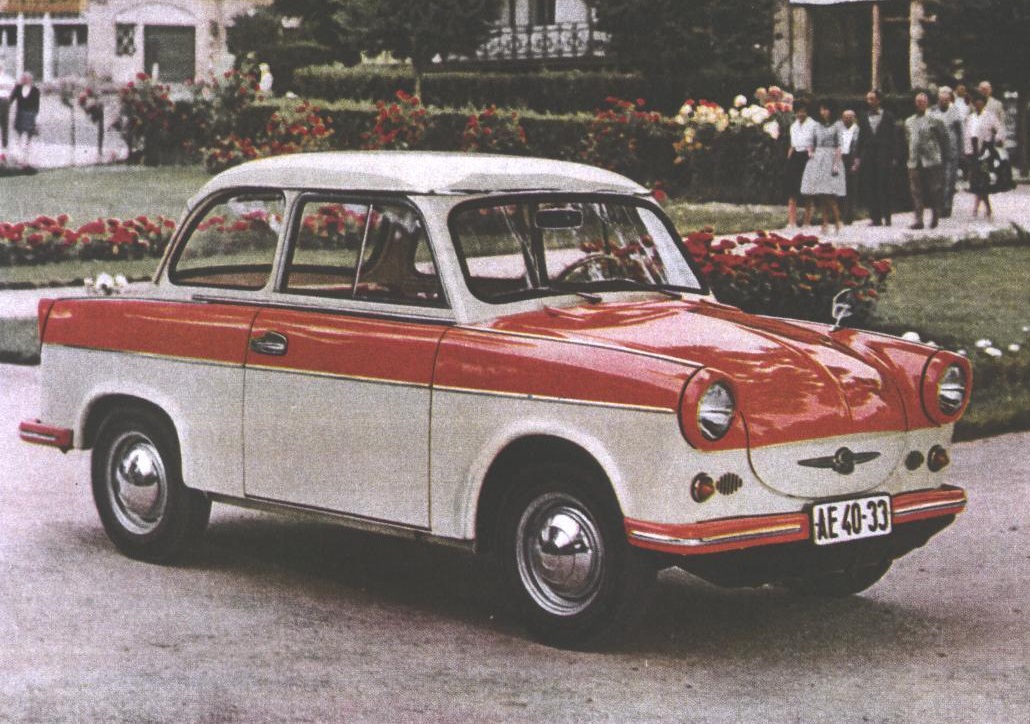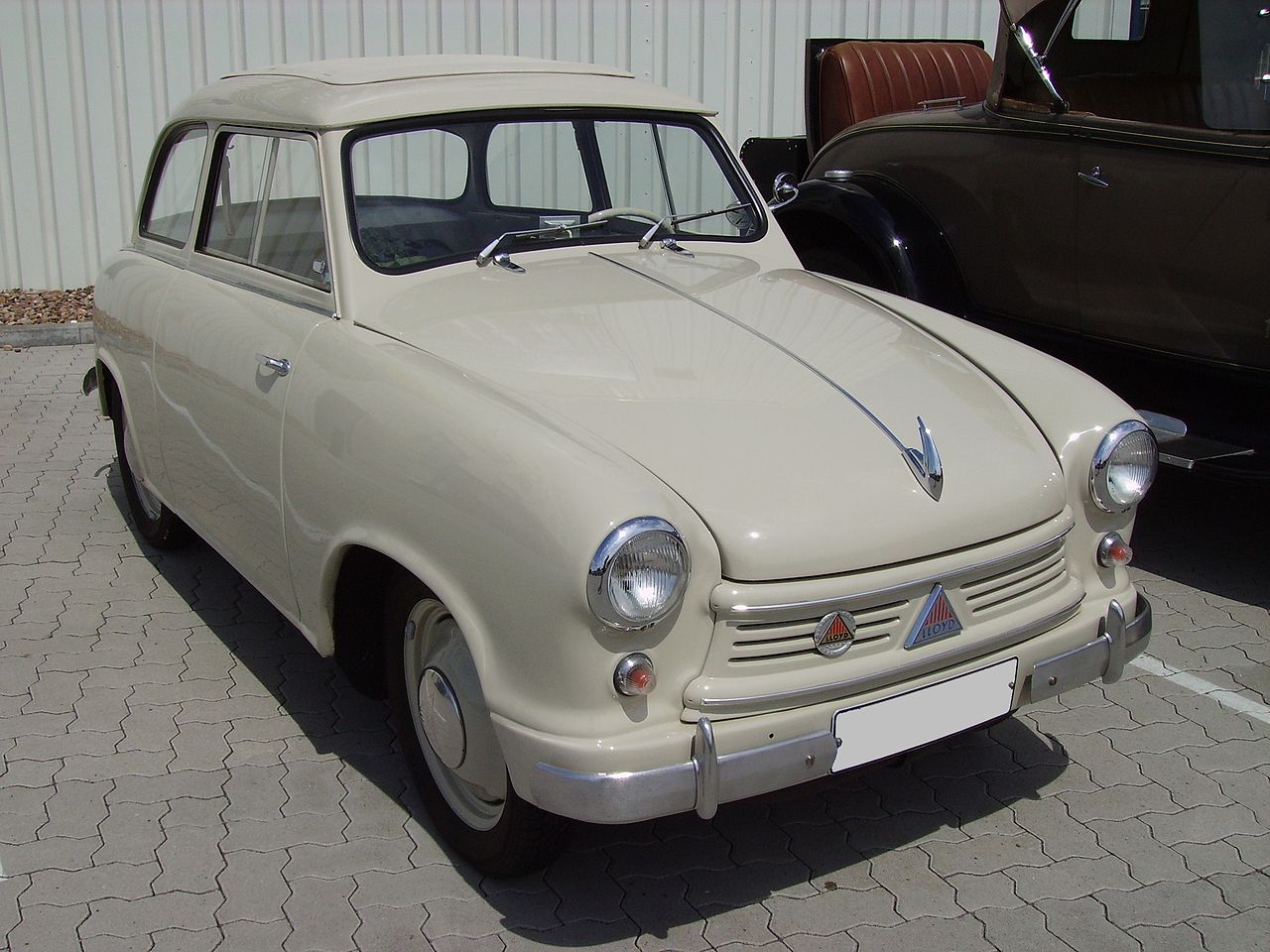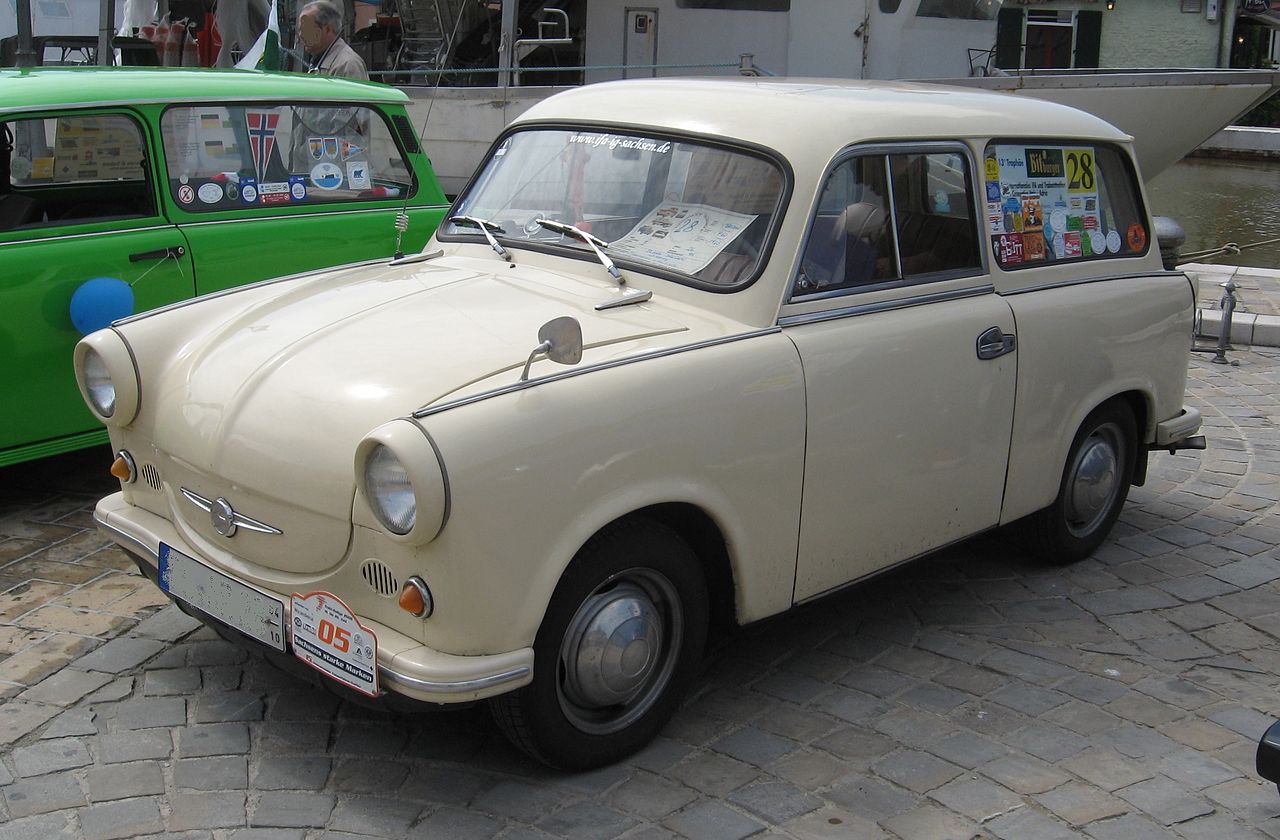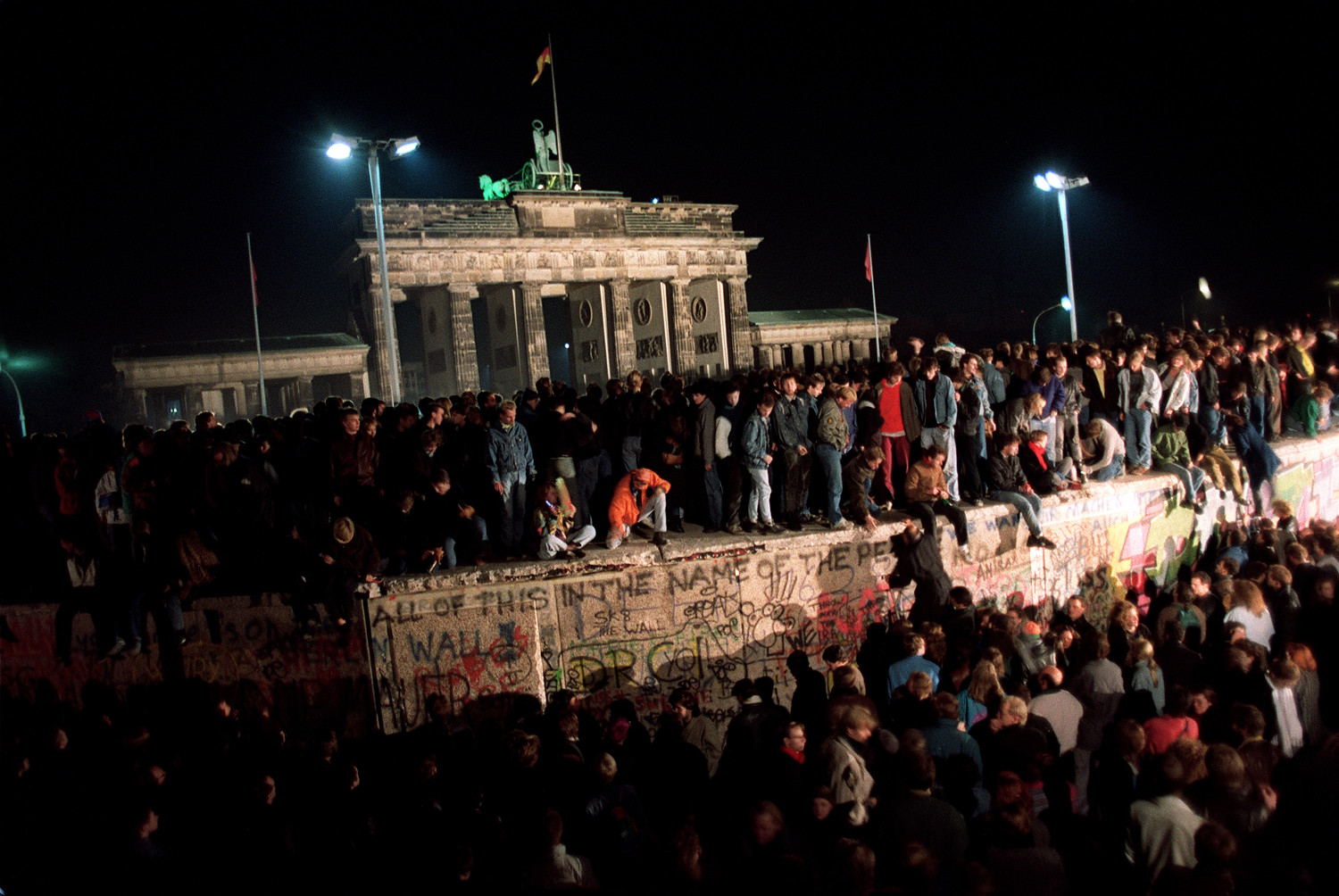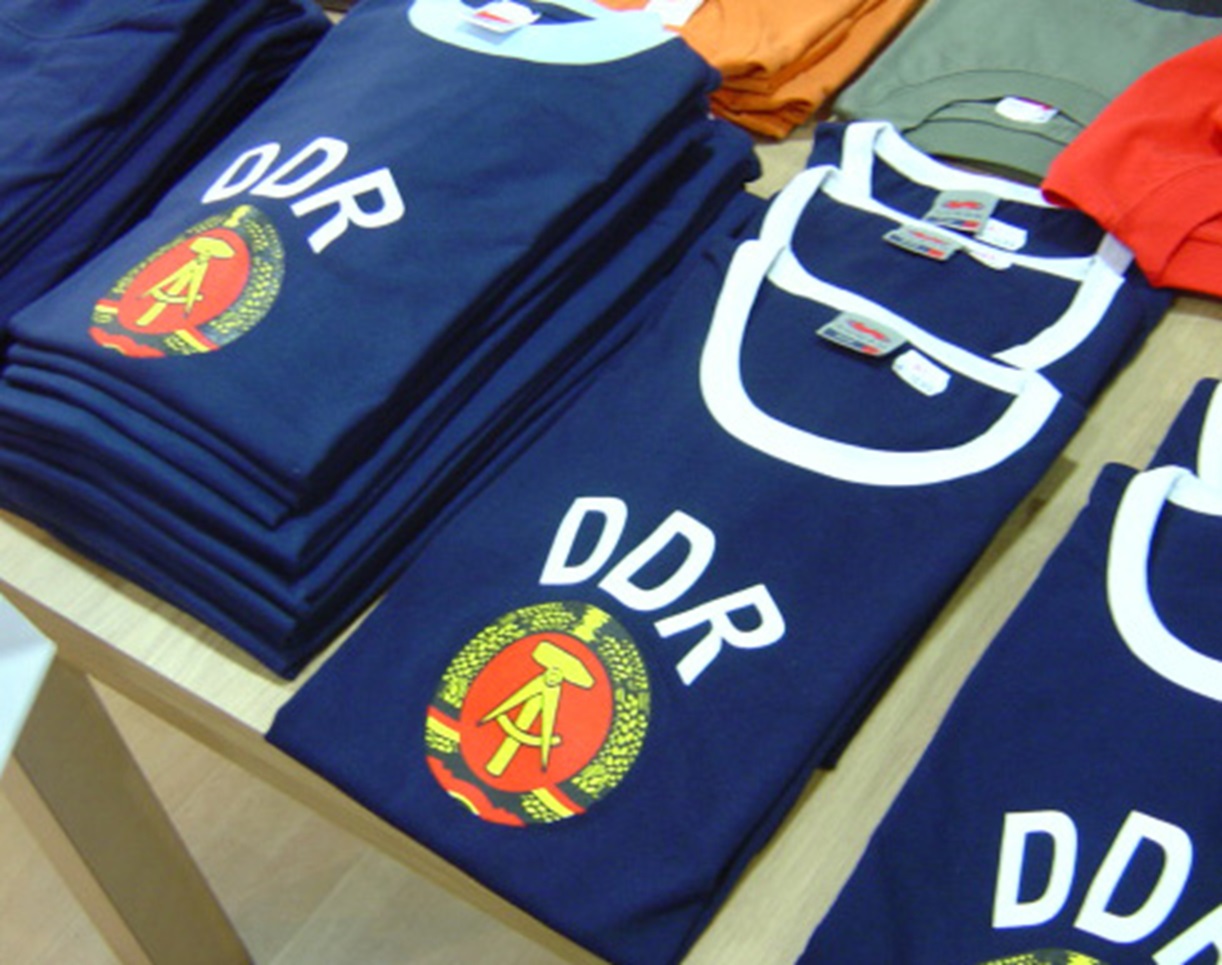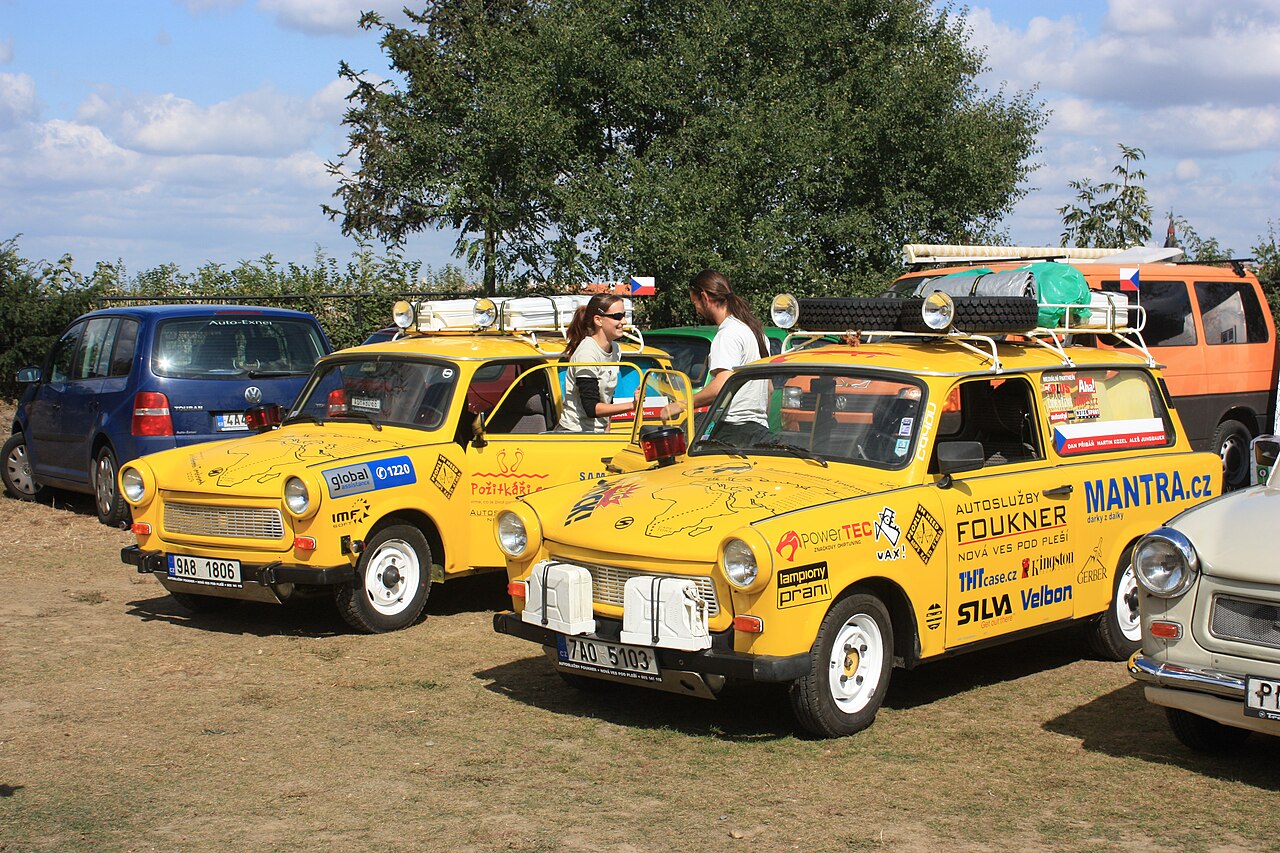The Notorious Trabant P 50
At one time in the West, jokes about goods and services in the Soviet Bloc were plentiful, with shortages and shoddy products being the standard stereotype. Sometimes, those jokes were exaggerated but often there was some truth. One notorious example of the lack of quality coming from Eastern Europe during the Cold War was East Germany’s legendary Trabant, and its first model, the Trabant P 50, has become a symbol of that era as potent as the Berlin Wall.
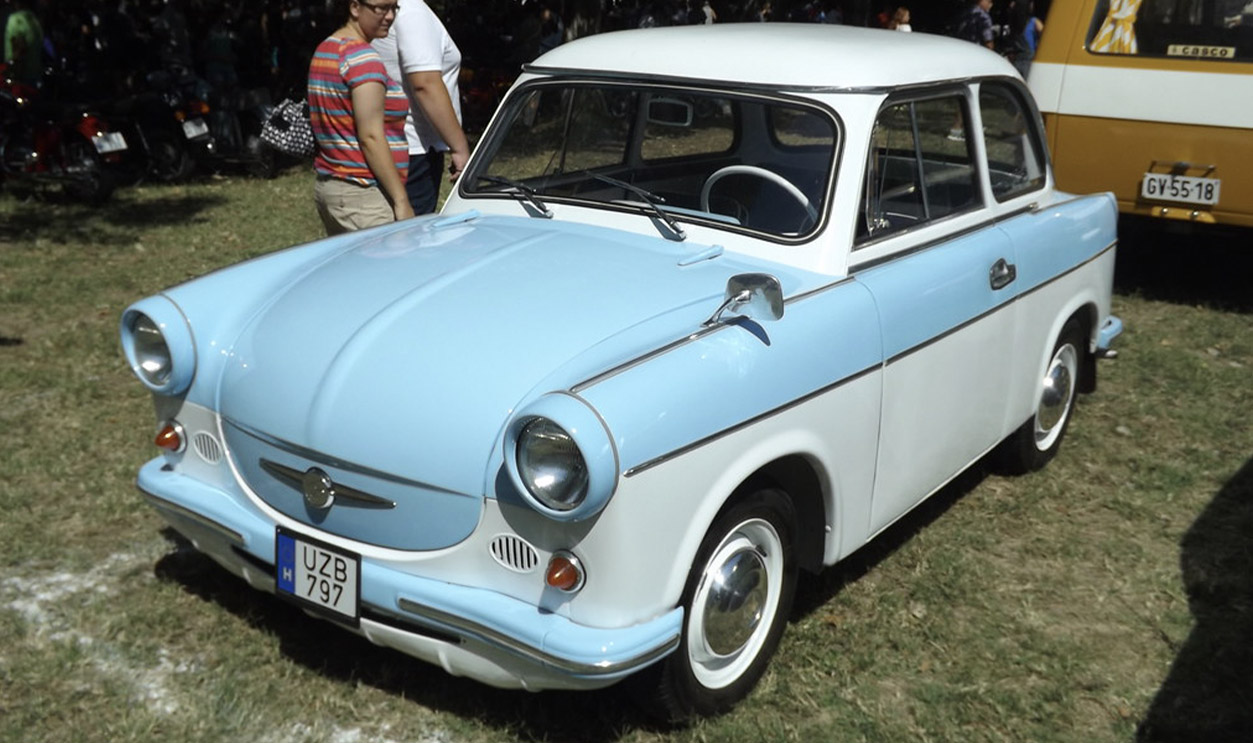
The End Of WWII
With Germany’s defeat at the end of WWII in 1945, the country was divided into four zones, each administered by one of the Allied nations: Great Britain, the United States, France, and the USSR. The Soviet sector in the east, while still under Soviet occupation, was soon governed by Soviet-backed German communists.
A New Country
In 1949, a new country emerged, the Deutsche Demokratische Republik (DDR), also known as East Germany. Even with the financial backing of the USSR, the East German economy nevertheless struggled as it attempted to rebuild the devastation of WWII.
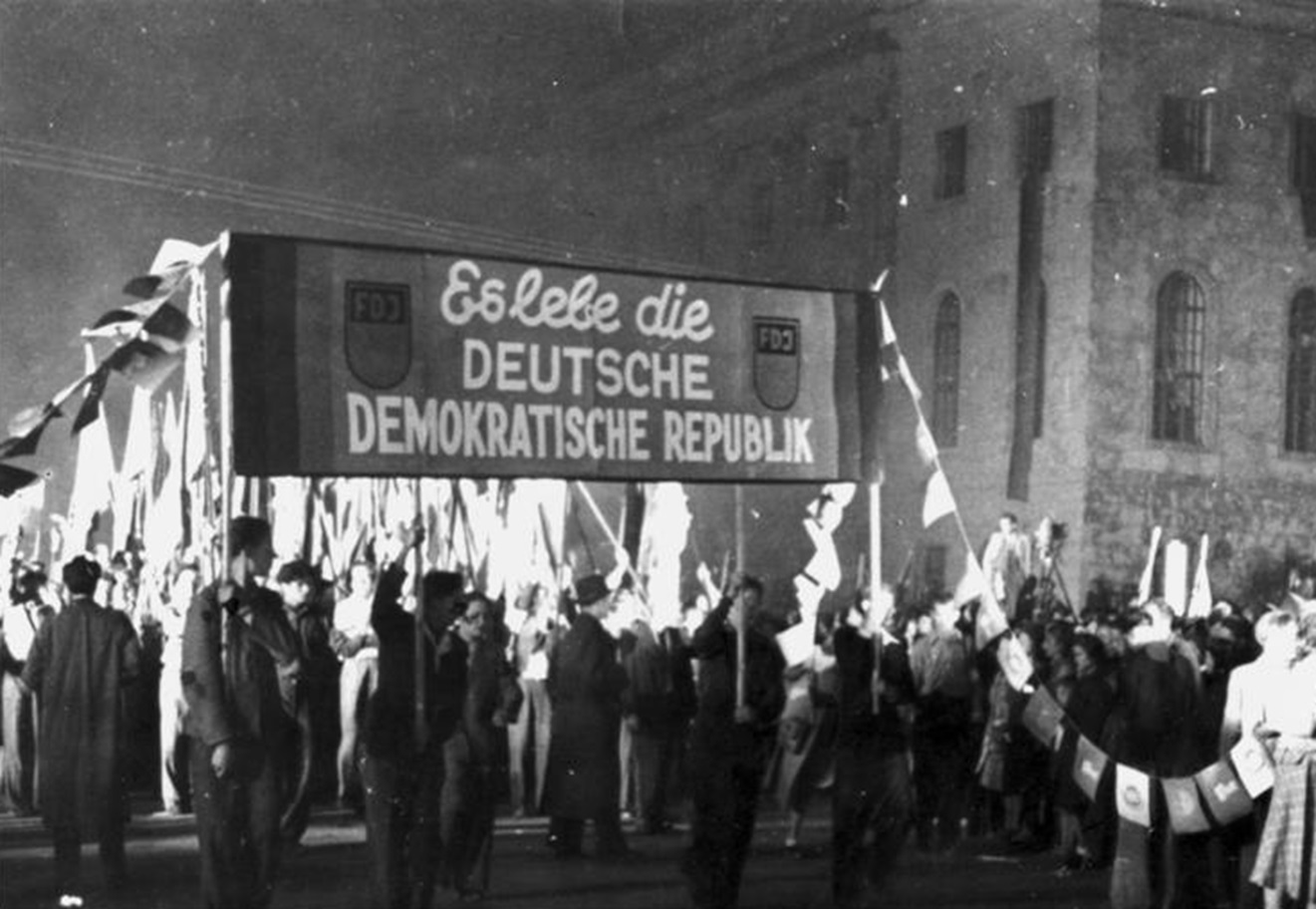 Bundesarchiv, CC-BY-SA 3.0, CC BY-SA 3.0 DE, Wikimedia Commons
Bundesarchiv, CC-BY-SA 3.0, CC BY-SA 3.0 DE, Wikimedia Commons
Rebuilding
Much of the industrial infrastructure of East Germany was destroyed or taken back to the USSR. The Soviets realized that East Germany was in ideological competition with West Germany. To help with the rebuilding, the Soviets transferred much of the industrial capacities to the East German government.
Industry In East Germany
These industries were owned by the government and governed by centrally controlled trusts called Kombinate. This form of administration was typical of communist countries, with industry run by committees under the control of the government. The entire production process from research and development and all the way through sales was directed by the Kombinate.
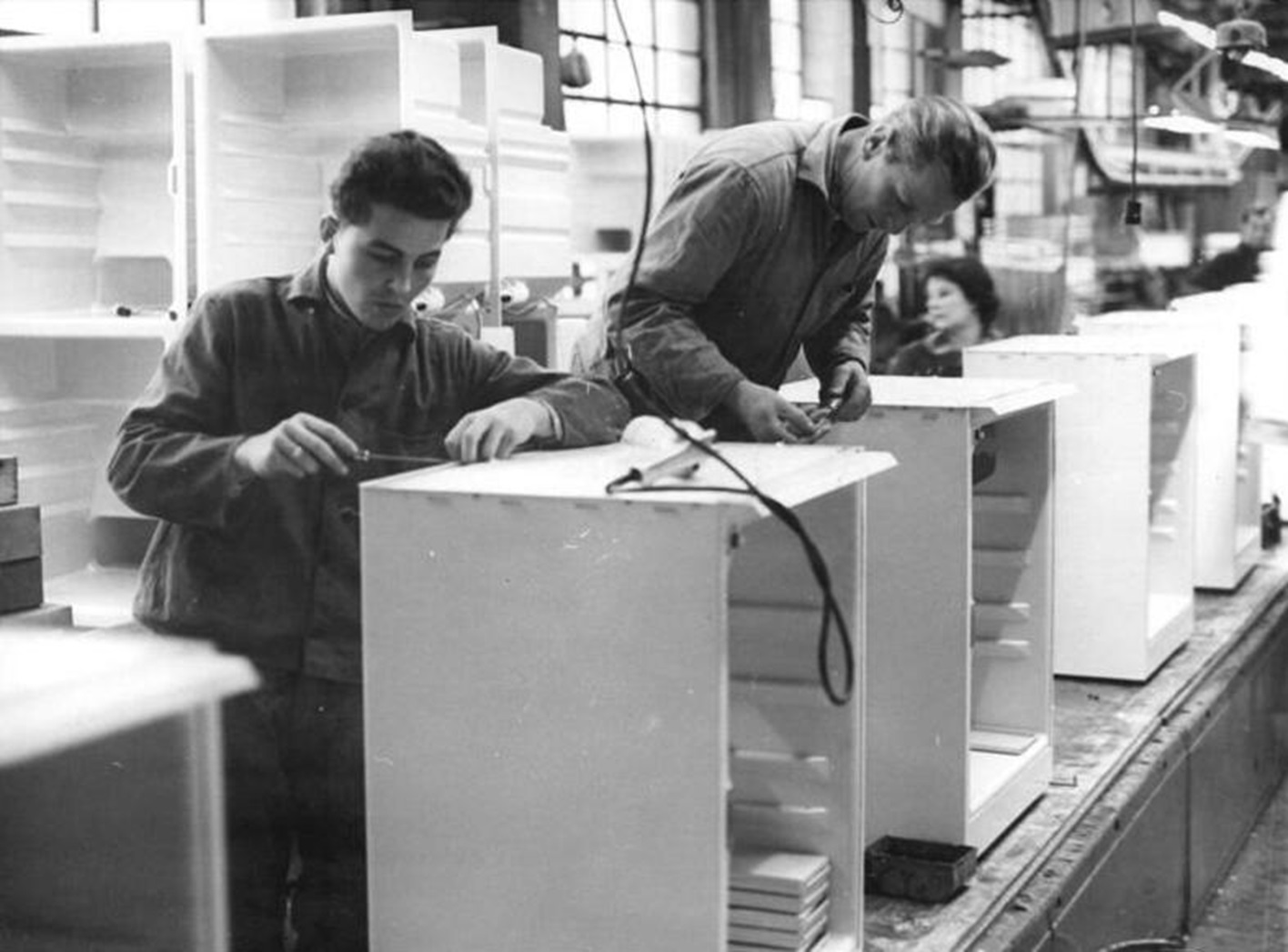 Bundesarchiv, CC-BY-SA 3.0, CC BY-SA 3.0 DE , Wikimedia Commons
Bundesarchiv, CC-BY-SA 3.0, CC BY-SA 3.0 DE , Wikimedia Commons
An Open Border
Under this system, East Germany struggled and given the still-damaged infrastructure, aid from the USSR was necessary. A more crucial problem soon arose. The border between East and West Germany was relatively open due to agreements between the four occupying powers.
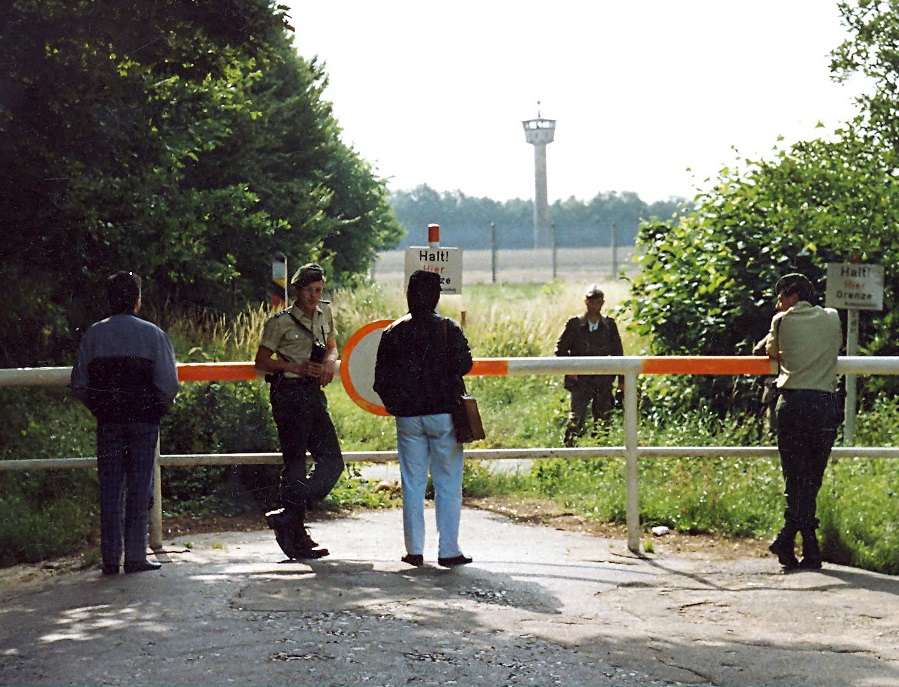 Unknown Author, CC BY-SA 2.0, Wikimedia Commons
Unknown Author, CC BY-SA 2.0, Wikimedia Commons
Shortages And Restrictions
With this openness, Germans freely traveled between sectors, unlike other Eastern Bloc countries where travel to the West was severely restricted. As shortages, restrictions, and a lack of civil liberties increased in East Germany, skilled workers and professionals fled for the West.
 Gotanero, CC BY-SA 4.0, Wikimedia Commons
Gotanero, CC BY-SA 4.0, Wikimedia Commons
The Brain Drain
Although the standard of living in East Germany was higher than in other Eastern Bloc countries, East Germans saw what life was like in the West. Around 4 million East Germans—a sixth of the population of the DDR—moved to the West.
 The Central Intelligence Agency, Wikimedia Commons
The Central Intelligence Agency, Wikimedia Commons
The Berlin Wall
The Berlin Wall was the East German regime’s response to this exodus and in 1961, that barrier—plus others all along the border between East and West Germany—was erected. If you hadn’t left East Germany for the West by the point, it was too late: you were essentially trapped.
The German Automotive Industry
Germany had long been a crucial pioneer in the automotive industry, producing the first true automobile with an internal combustion engine. With the end of WWII, much of Germany’s industry was destroyed or dismantled and sent to the Soviet Union as WWII reparations.
East Germany And Automotive Manufacturing
Some private industry continued after WWII, and in the Western sectors, Volkswagen, Mercedes-Benz, Opel, and Porsche resumed production. In East Germany, with no private enterprise on the industrial level, the government, with the approval of the Soviets, set out to resume automotive manufacturing by the mid-1950s.
German Work Ethic
The German stereotype is one of hard-working and industrious people who produce well-engineered and well-produced goods. German cars are renowned for their high quality. East German industry was a pale shadow of the West but it still had the mark of the German “work ethic”, to a certain degree. However, a planned economy and frequent shortages undermined much of that effort.
Introducing The Trabant
One of East Germany’s most famous efforts was the production of the Trabant, a small car that came to symbolize everything bad (and sometimes good) about East Germany. Rolling off the line for the first time in 1957, Trabants, or Trabbis, as they were both affectionately and derisively called, maintained production until 1991.
 Felix O, CC BY-SA 2.0, Wikimedia Commons
Felix O, CC BY-SA 2.0, Wikimedia Commons
The History Of The Trabant
East Germany produced two cars during its existence: the Trabant, meant for the domestic market, and the more powerful Wartburg, produced between 1956 and 1991 for the export market. The Wartburg was a revival of an early vehicle and the new Wartburg was sold to West Germany but was also available to the East German Party elite.
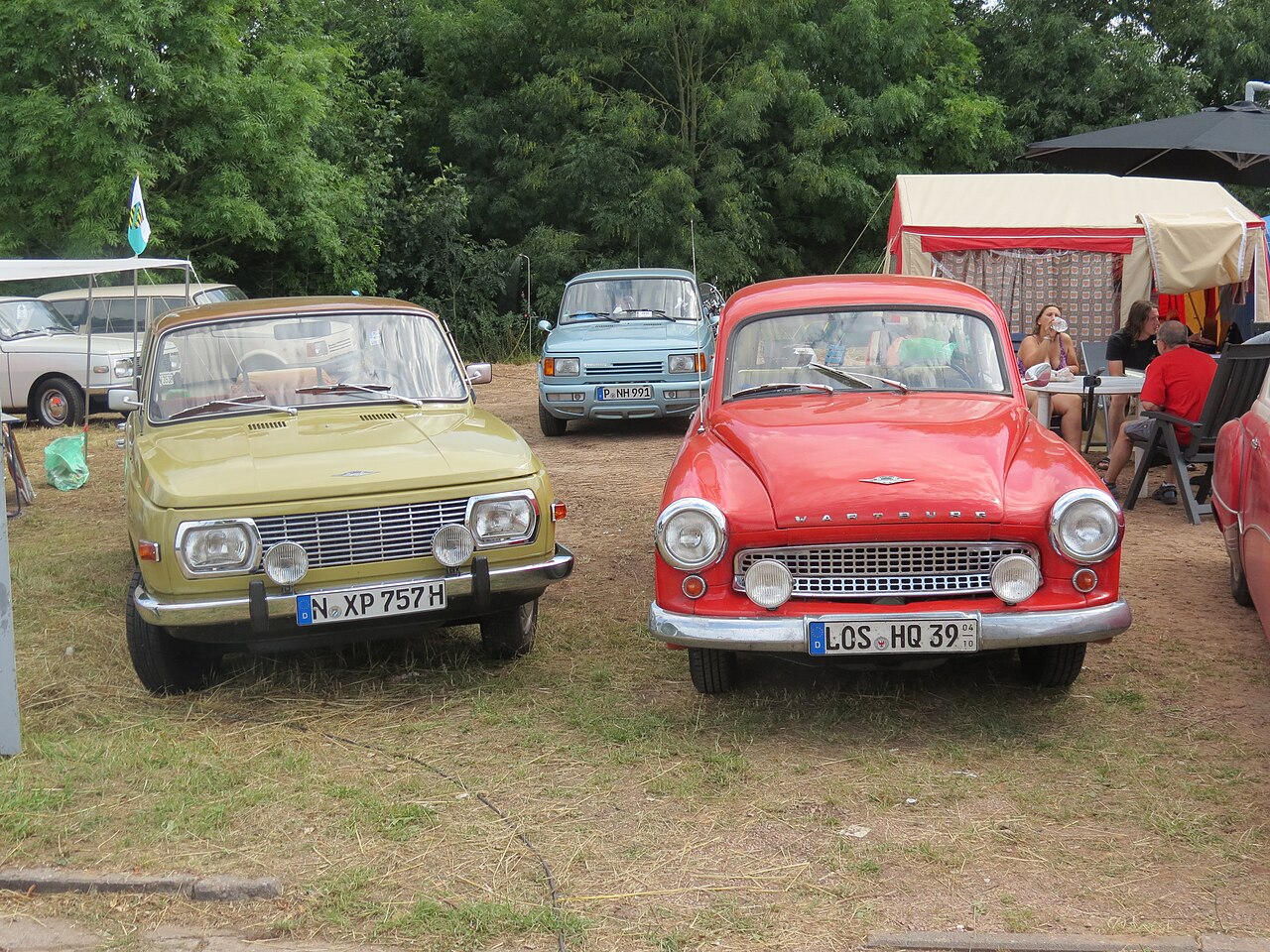 Dk0704, CC BY-SA 4.0, Wikimedia Commons
Dk0704, CC BY-SA 4.0, Wikimedia Commons
The Trabant Models
Trabant’s first model was the Trabant P 50, introduced in 1957. Between 1957 and 1962, 131,495 Trabant P 50s were produced. This was followed by the Trabant 600 (1962–1965), the Trabant 601 (1964–1990), and the Trabant 1.1, produced in 1990–1991.
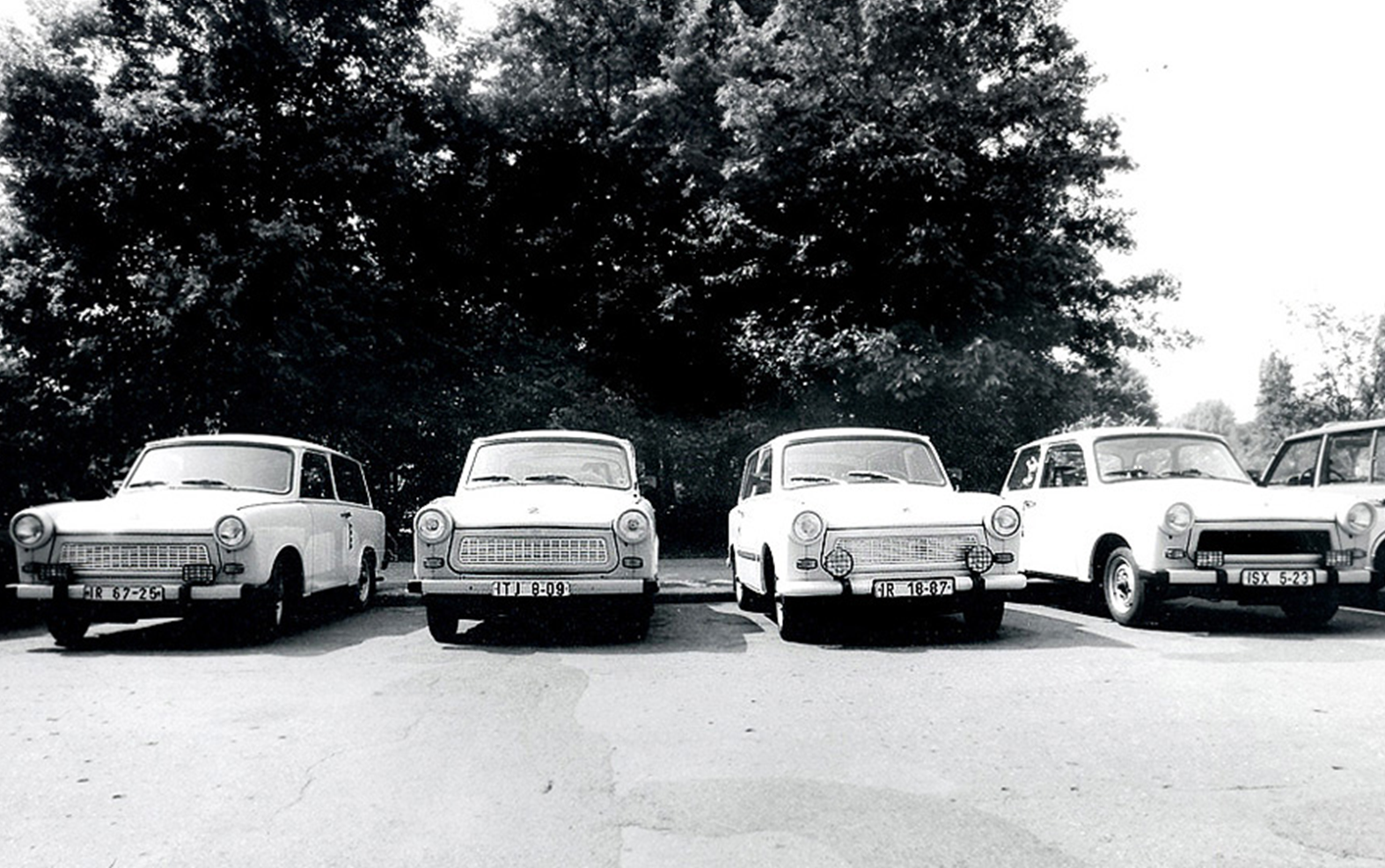 Gary Mark Smith, CC BY-SA 3.0, Wikimedia Commons
Gary Mark Smith, CC BY-SA 3.0, Wikimedia Commons
A Car For The People
The Council of Ministers of East Germany decreed in 1954 that the German Democratic Republic should have its own car for the people. It was to have two front seats plus two smaller ones in the back, be lightweight (a mass of no more than 600 kg), be fuel efficient, and have a plastic body.
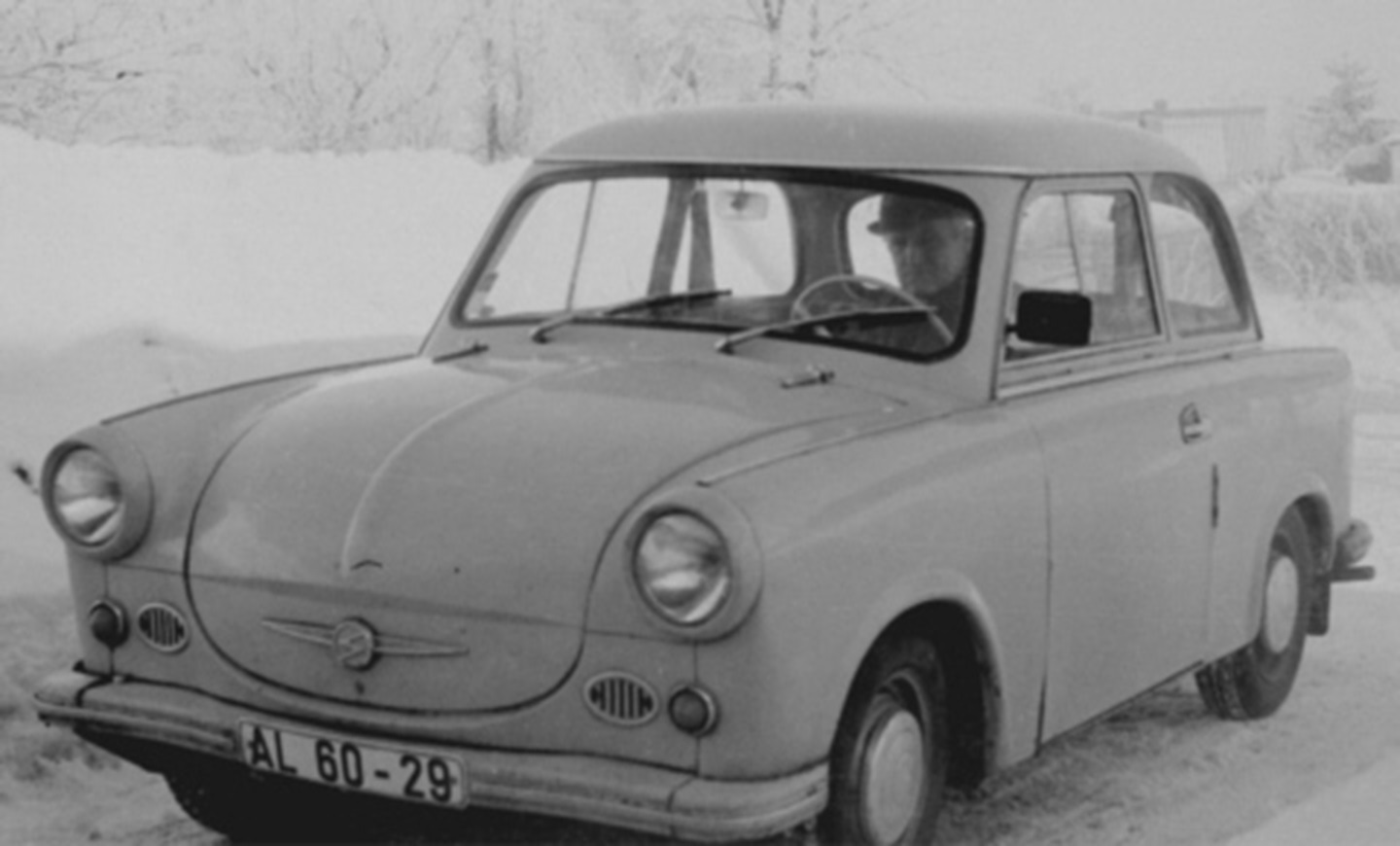 Pc_fish, CC BY-SA 3.0, Wikimedia Commons
Pc_fish, CC BY-SA 3.0, Wikimedia Commons
The Duroplast Body
Yes, a plastic body. The body was actually duroplast, a composite thermosetting resin plastic developed in East Germany in 1953. Duroplast was similar to Formica and Bakelite.
Making Cars Accessible
For its era, this duroplast body was seen as an innovation. Durable and cheap, this material was easily produced by East German industry and was readily available, making cars—in theory—accessible to workers and their families.
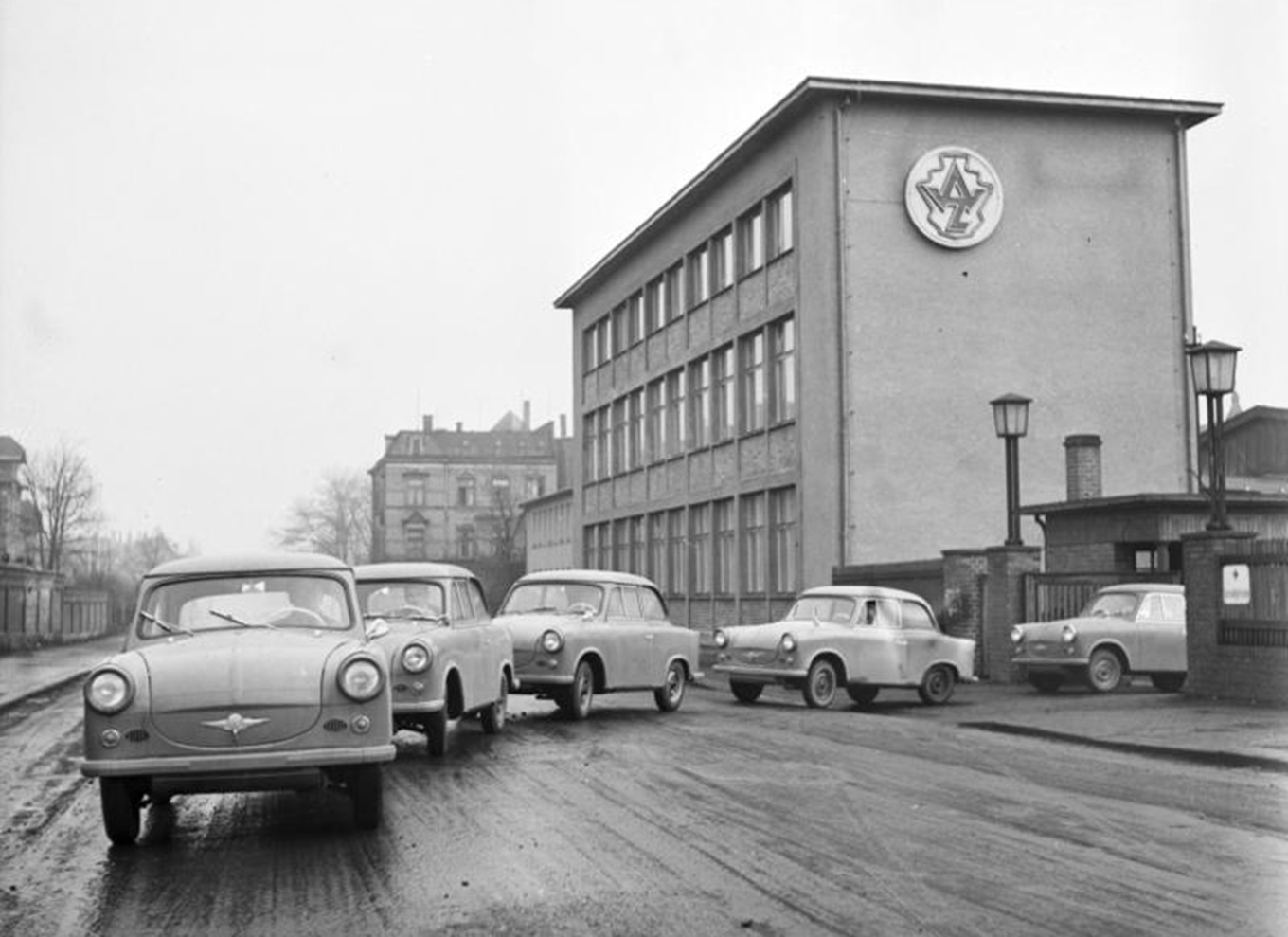 Bundesarchiv, CC-BY-SA 3.0, CC BY-SA 3.0 DE, Wikimedia Commons
Bundesarchiv, CC-BY-SA 3.0, CC BY-SA 3.0 DE, Wikimedia Commons
Problems With Duroplast
Unfortunately, duroplast, while successful in its use for household goods, was not suitable for cars as it was easily broken in collisions, and with few safety features in the Trabant P 50, the car’s occupants were not protected.
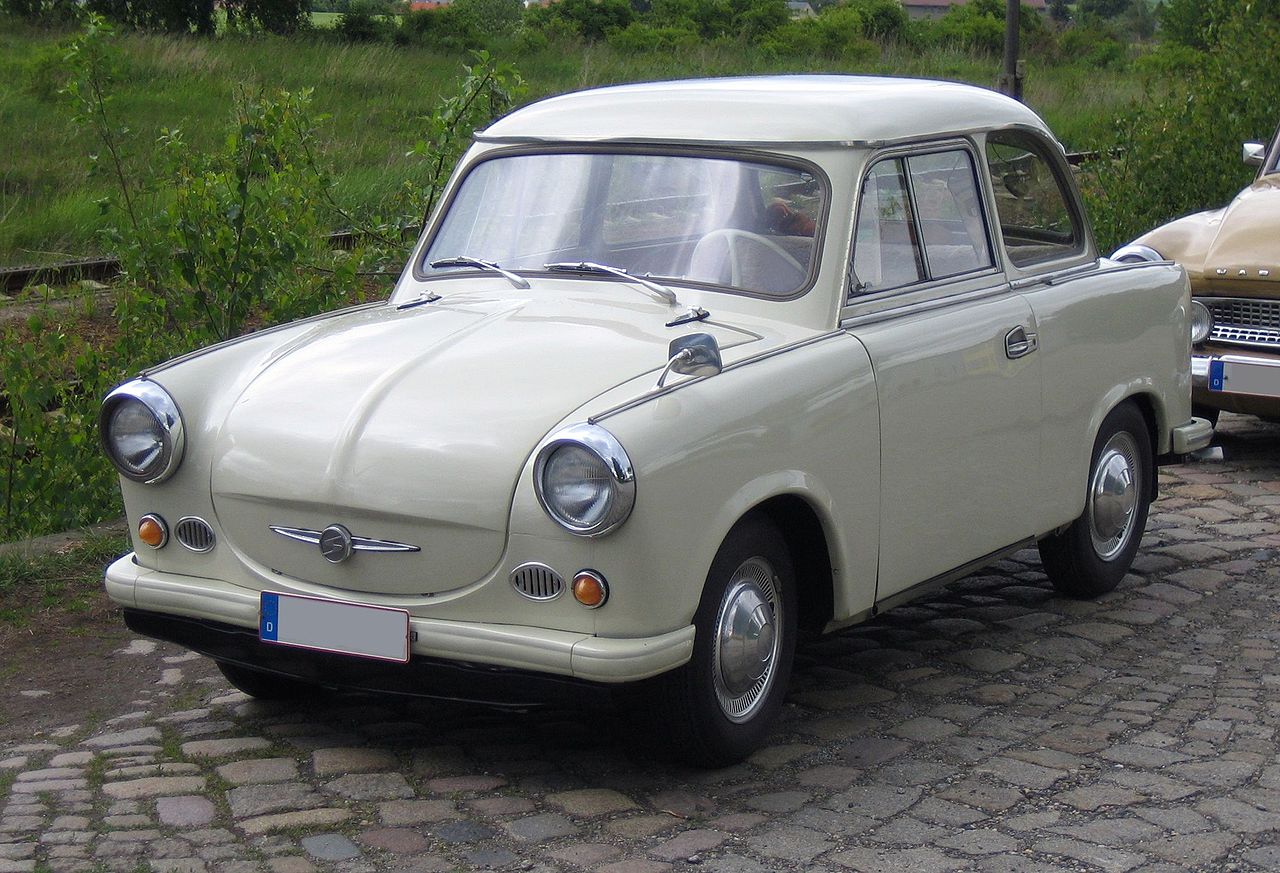 burts, CC BY-SA 3.0, Wikimedia Commons
burts, CC BY-SA 3.0, Wikimedia Commons
Other Innovations
Also considered innovative for the 1950s, the Trabant P 50 featured front-wheel-drive transmission and independent suspension, something being developed in the West as well.
The Cost
The cost was to be set at 4,000 East German Deutsche Marks (roughly $11,000 USD today). The average salary in East Germany was 500 East German Deutsche Marks.
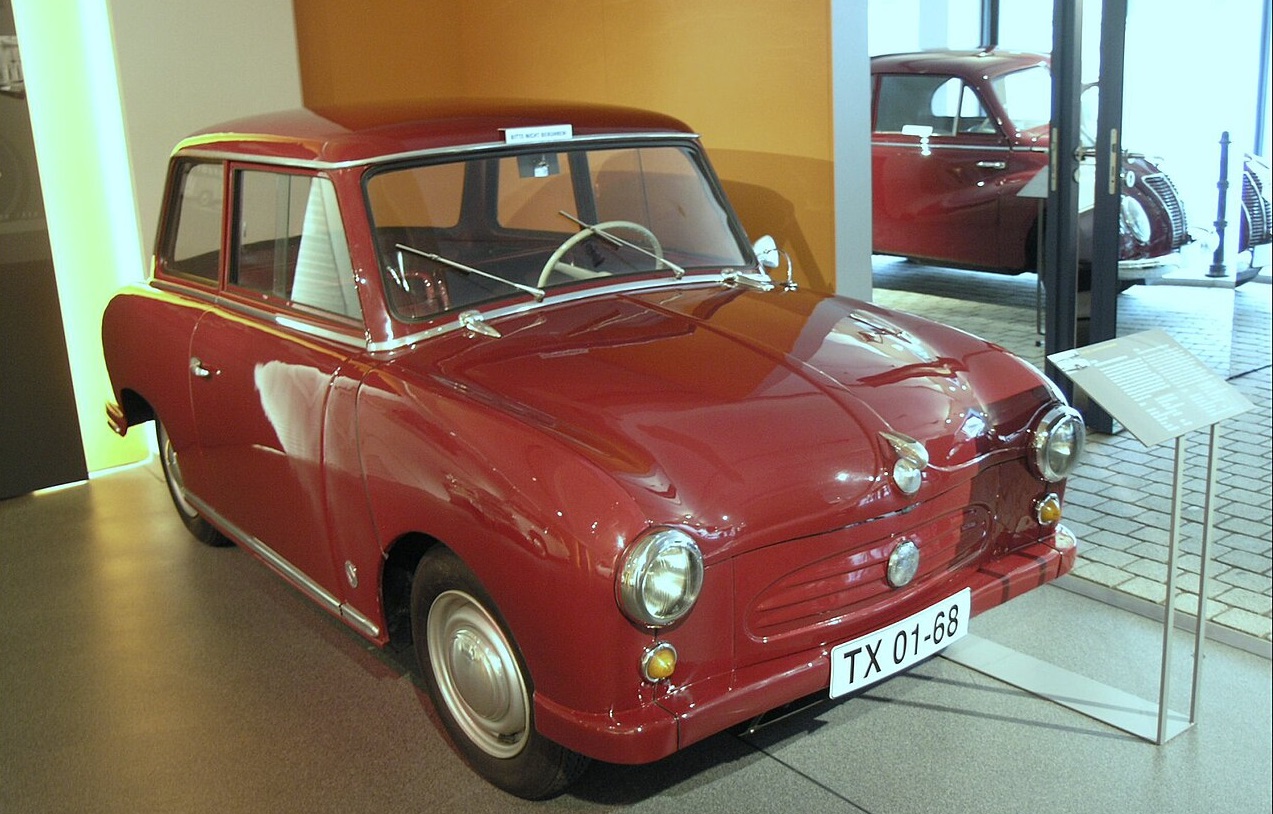 Matěj Baťha, CC BY-SA 2.5, Wikimedia Commons
Matěj Baťha, CC BY-SA 2.5, Wikimedia Commons
Early Developments
By 1955, engineers were at work fulfilling the government mandate. Before they started the P 50, engineers at VEB Automobilwerk Zwickau developed a concept model, the AWZ P 70, to gain experience working with duroplast.
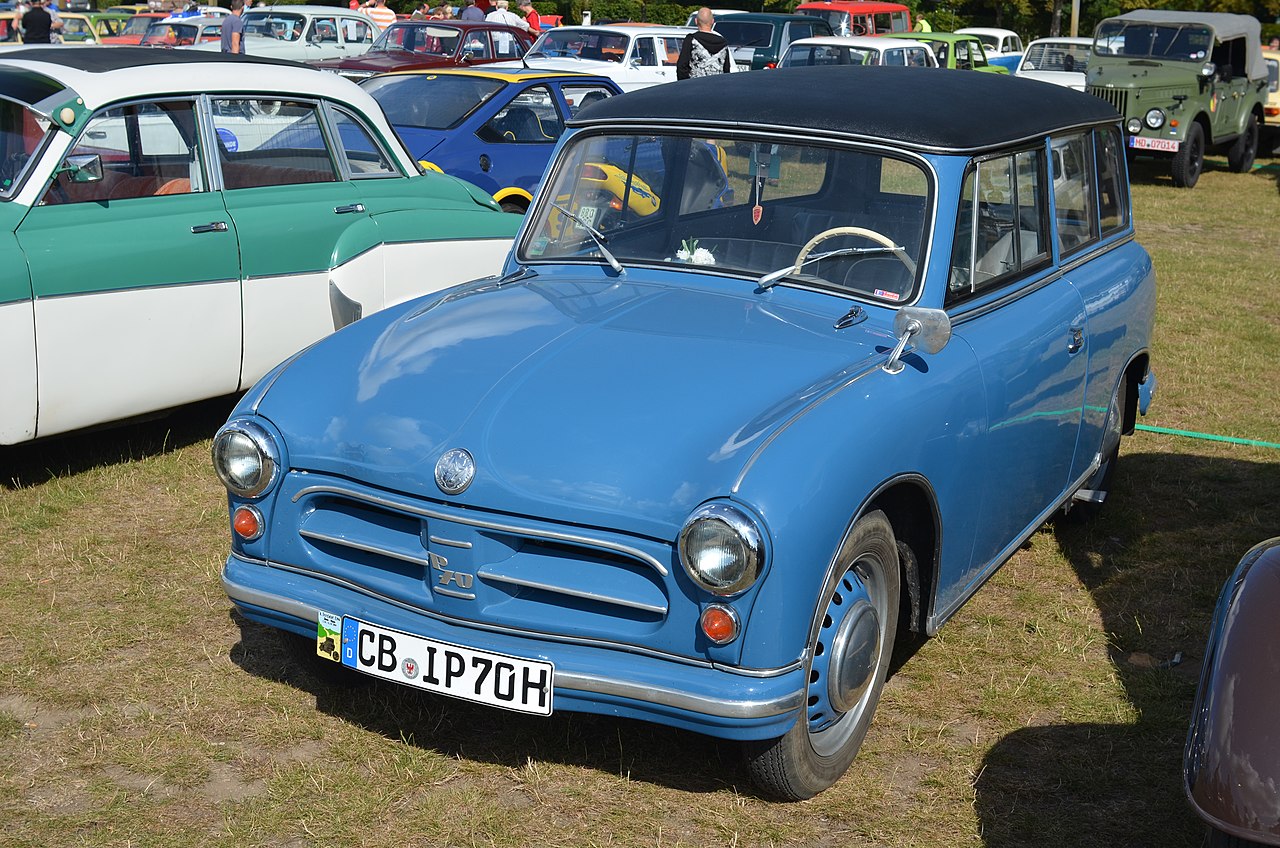 Torsten Maue, CC BY 2.0, Wikimedia Commons
Torsten Maue, CC BY 2.0, Wikimedia Commons
Planning Stages
With that experience, they were ready to move on to the Trabant P 50 itself. The P 50 was modeled on the West German Lloyd 400, a small car produced by Lloyd Motor Works in Bremen.
The 1957 Leipzig Trade Fair
Technical specifications for the so-called Type 50 were released to the public in 1956. The finished car was presented to the public at the 1957 Leipzig Trade Fair. In late 1957, 50 cars were built before series production.
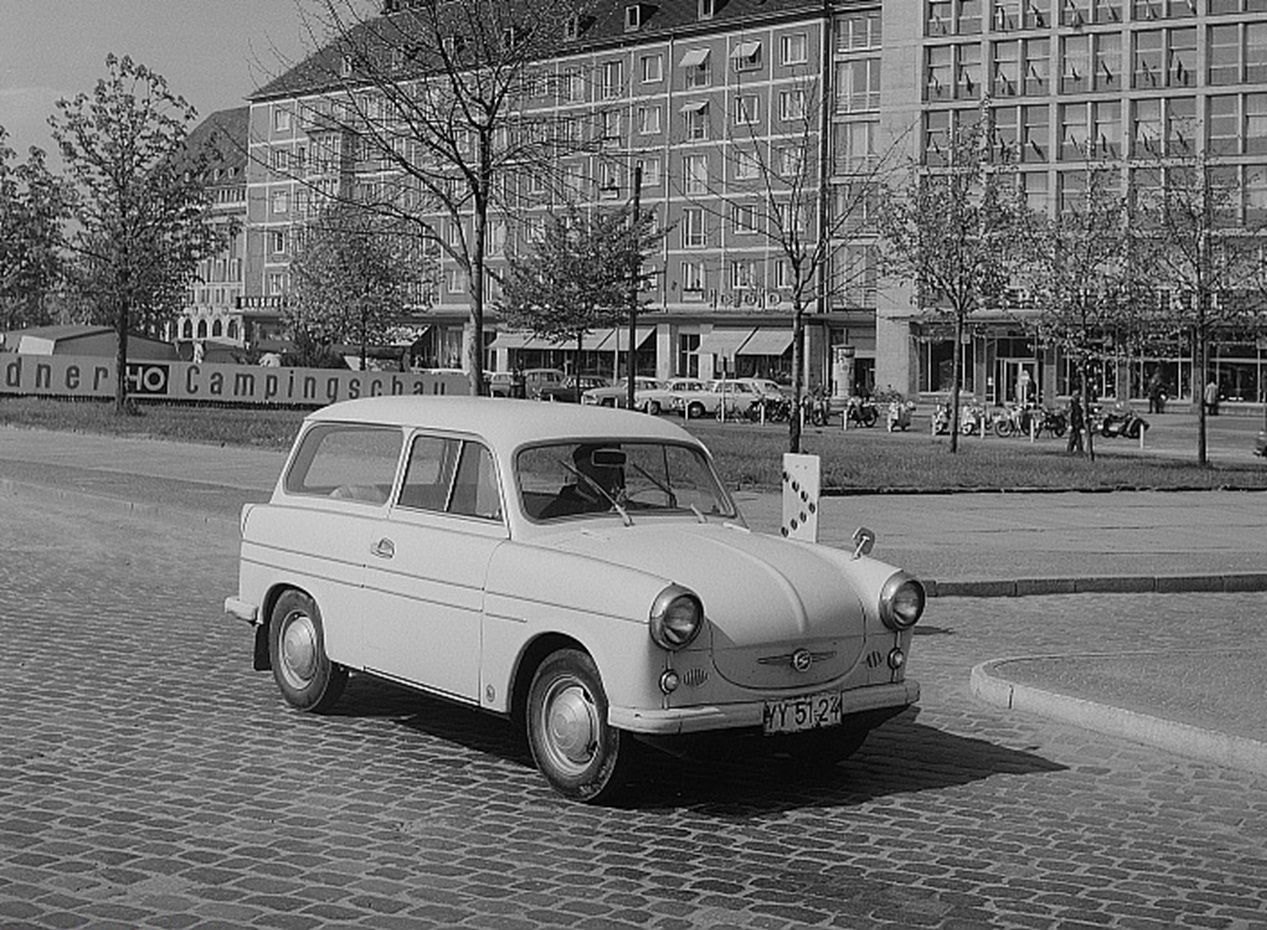 Deutsche Fotothek, CC BY-SA 3.0 DE, Wikimedia Commons
Deutsche Fotothek, CC BY-SA 3.0 DE, Wikimedia Commons
Not Ready
Full production of the Trabant P 50 was delayed. The production capacities at VEB Automobilwerk Zwickau were not yet suitable for producing the cars. There were also problems with the design of the P 50 series engine.
 Mrannen1958, CC BY-SA 3.0, Wikimedia Commons
Mrannen1958, CC BY-SA 3.0, Wikimedia Commons
The Challenges
To meet these challenges, the problems with VEB Automobilwerk Zwickau’s production capabilities were corrected by merging those facilities with VEB Sachsenring Kraftfahrzeug und Motorenwerke Zwickau. This new conglomerate was now called VEB Sachsenring Automobilwerke Zwickau.
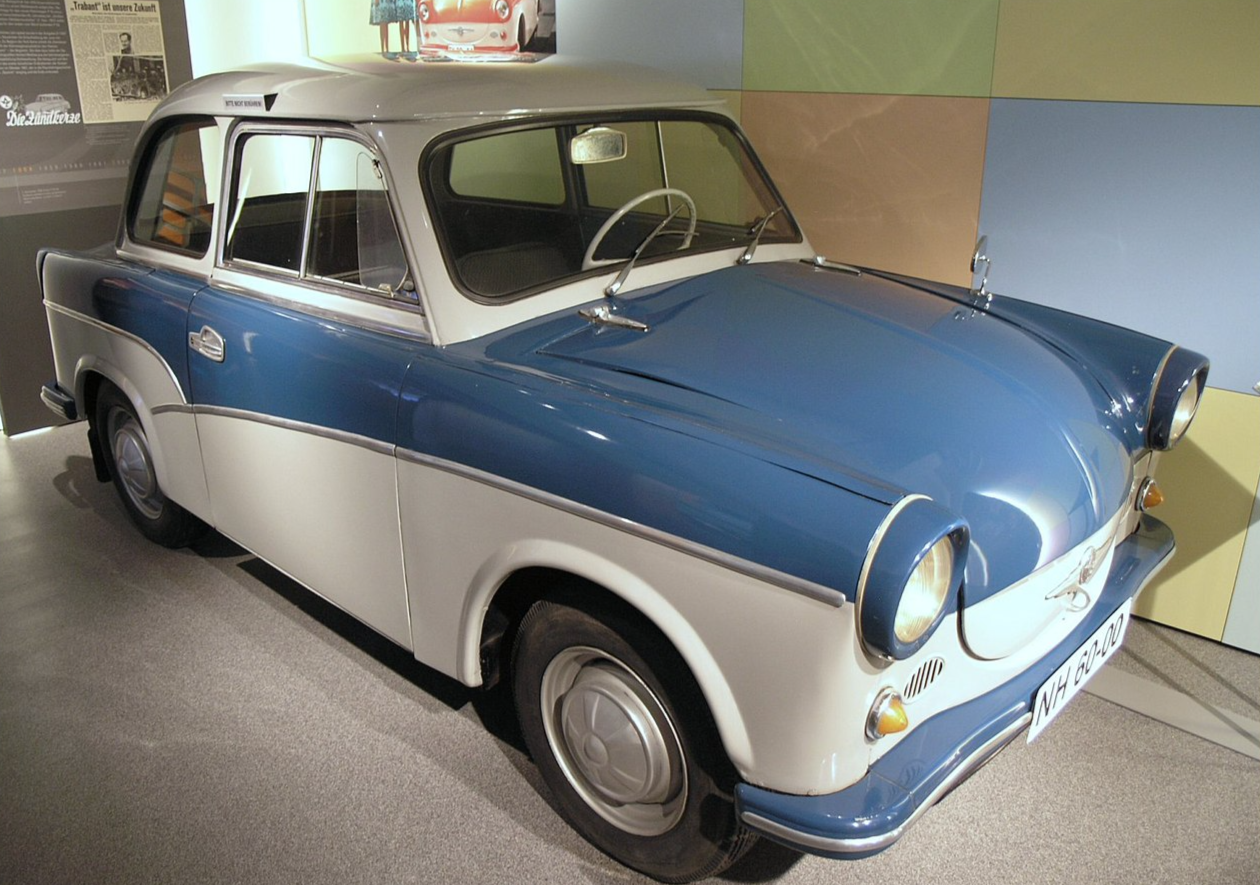 Matěj Baťha, CC BY-SA 2.5, Wikimedia Commons
Matěj Baťha, CC BY-SA 2.5, Wikimedia Commons
Production
The full production of the Trabant P 50 lasted from August 1958 to September 1962. These were all produced at the Zwickau plant. There were several technical upgrades throughout the series’ run, including an engine upgrade after the first month.
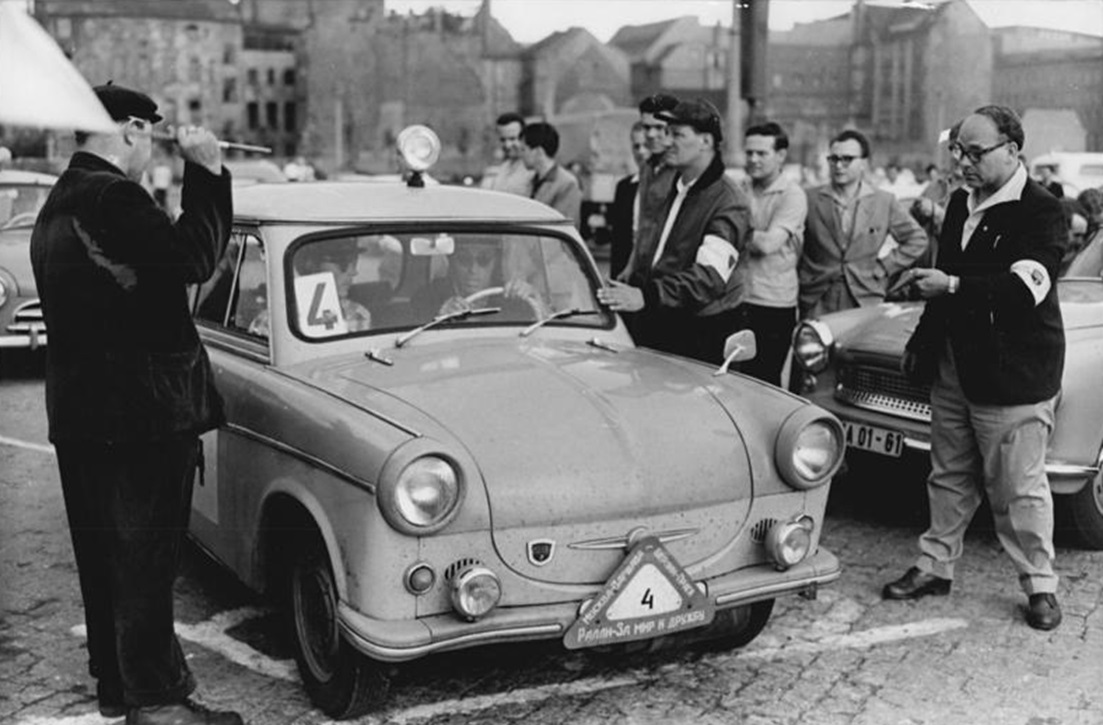 Bundesarchiv, CC-BY-SA 3.0, CC BY-SA 3.0 DE, Wikimedia Commons
Bundesarchiv, CC-BY-SA 3.0, CC BY-SA 3.0 DE, Wikimedia Commons
Improvements
By August 1959, the whole engine was replaced with an estate version introduced in March 1960, providing more room in the trunk. Production shifted somewhat with the cars being pre-assembled at VEB Sachenring Automobilwerke Zwickau and then completed by the coachbuilder VEB Karosseriewerk Meerane.
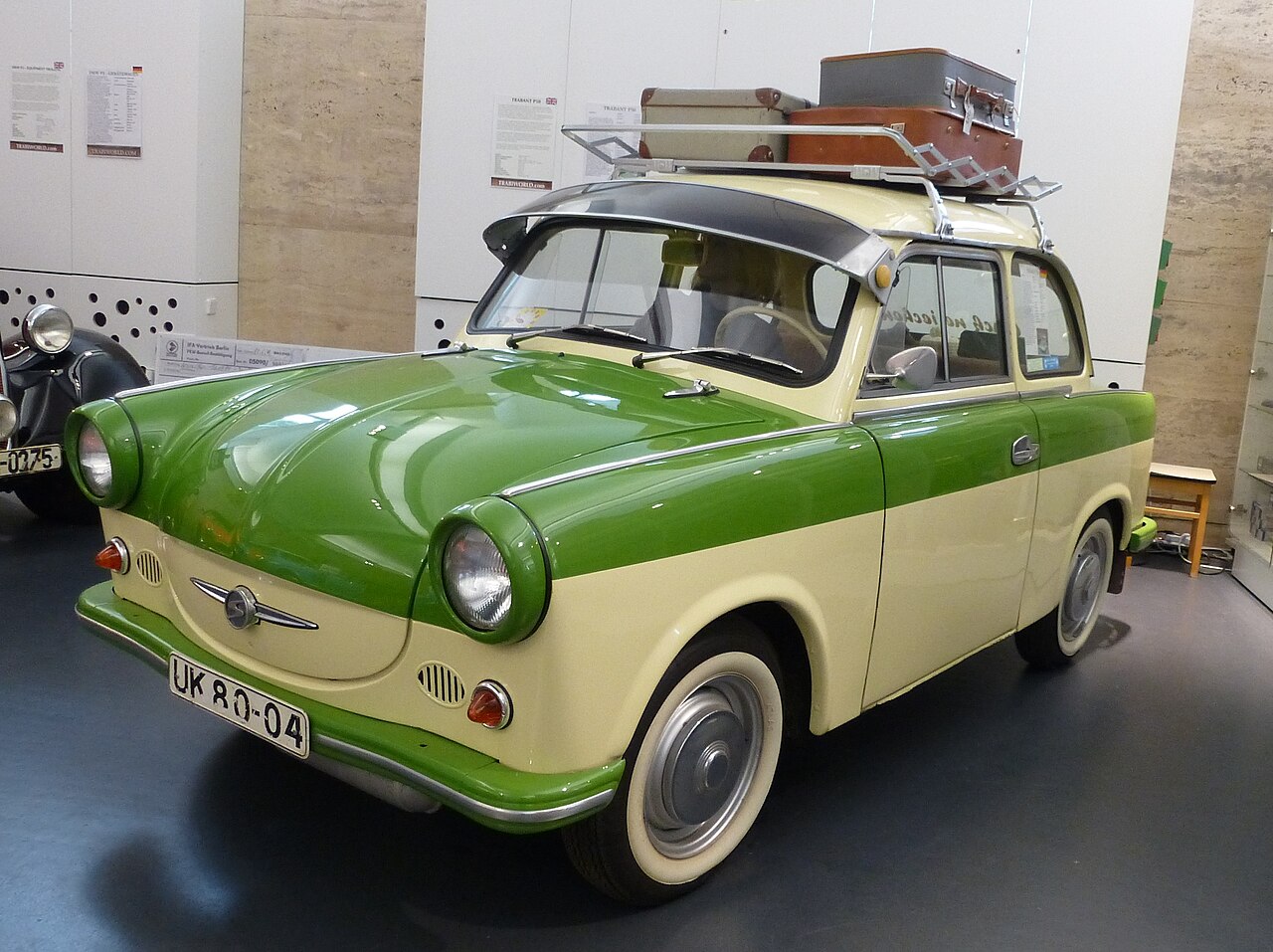 Buch-t, CC BY-SA 3.0 DE, Wikimedia Commons
Buch-t, CC BY-SA 3.0 DE, Wikimedia Commons
Panel Van
A panel van was introduced in 1961. All models were available to East Germans and were exported to the West. The Trabant P 50 Camping was introduced strictly for the DDR market. These featured flat-folding seats and a large folding sunroof.
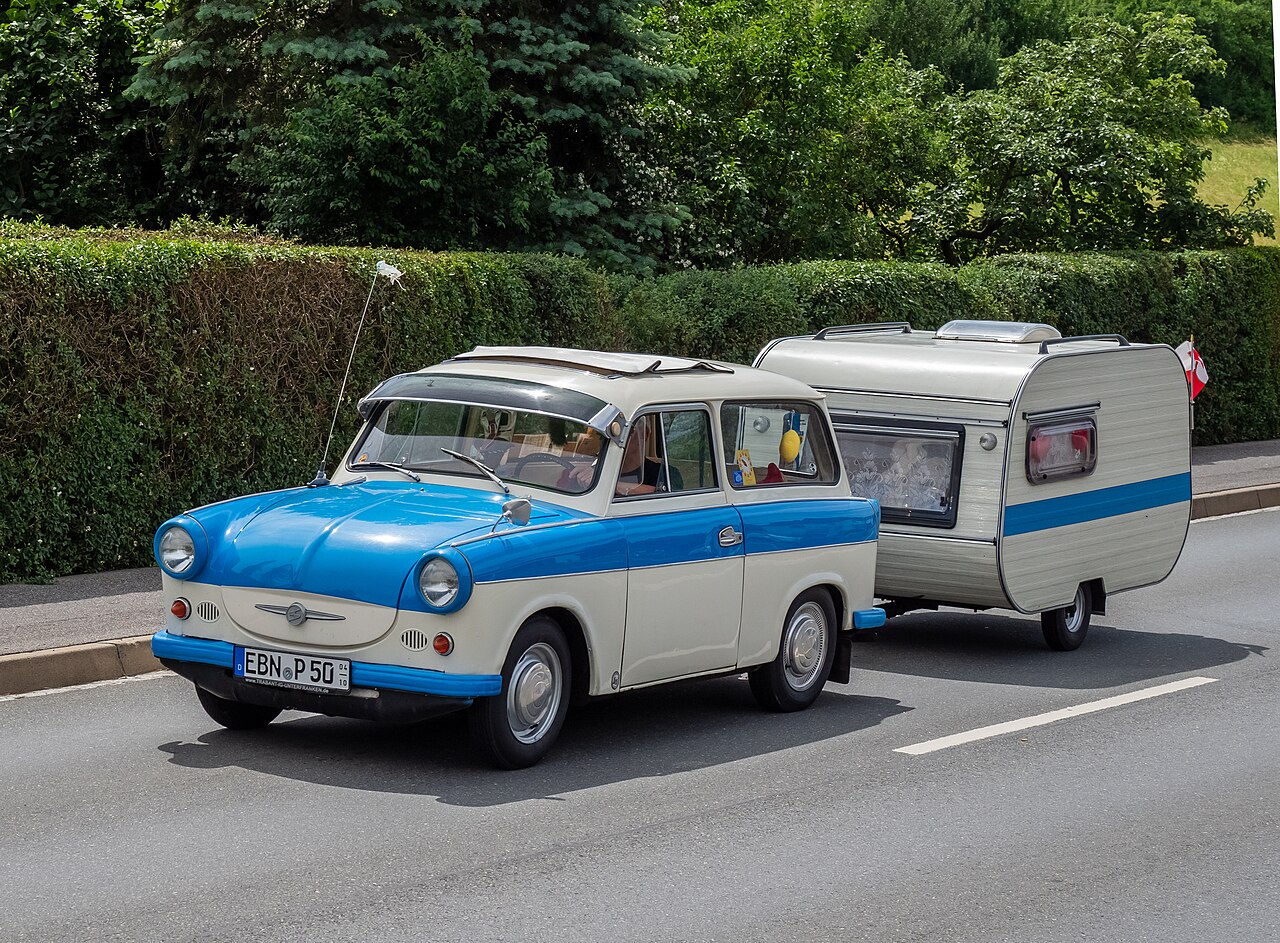 Reinhold Möller, CC BY-SA 4.0, Wikimedia Commons
Reinhold Möller, CC BY-SA 4.0, Wikimedia Commons
Body Styles
There were two body styles: the two-door Saloon and the three-door Estate (essentially a hatchback with no rear window). The rear door on the Estate was side-hinged.
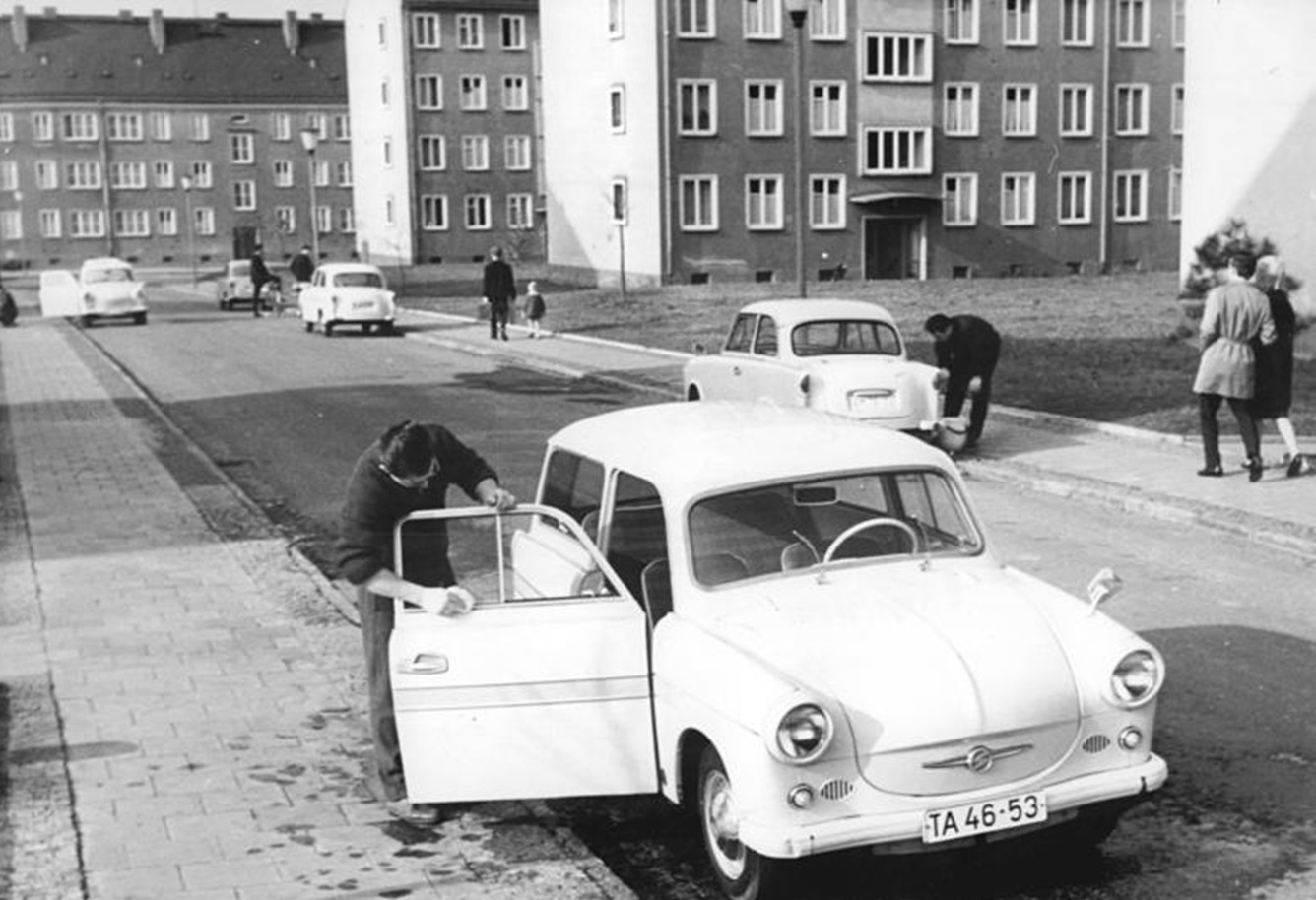 Bundesarchiv, CC-BY-SA 3.0, CC BY-SA 3.0 DE, Wikimedia Commons
Bundesarchiv, CC-BY-SA 3.0, CC BY-SA 3.0 DE, Wikimedia Commons
Factory Options
The Camping model was the only model available with factory options. The assembly of a Trabant P 50 took 180 man-hours. The price remained stable throughout the P 50’s run. The price was 7,450 East German Deutsche Marks for the basic P 50, 8,900 Marks for the Estate model and 9,500 Marks for the Camping model.
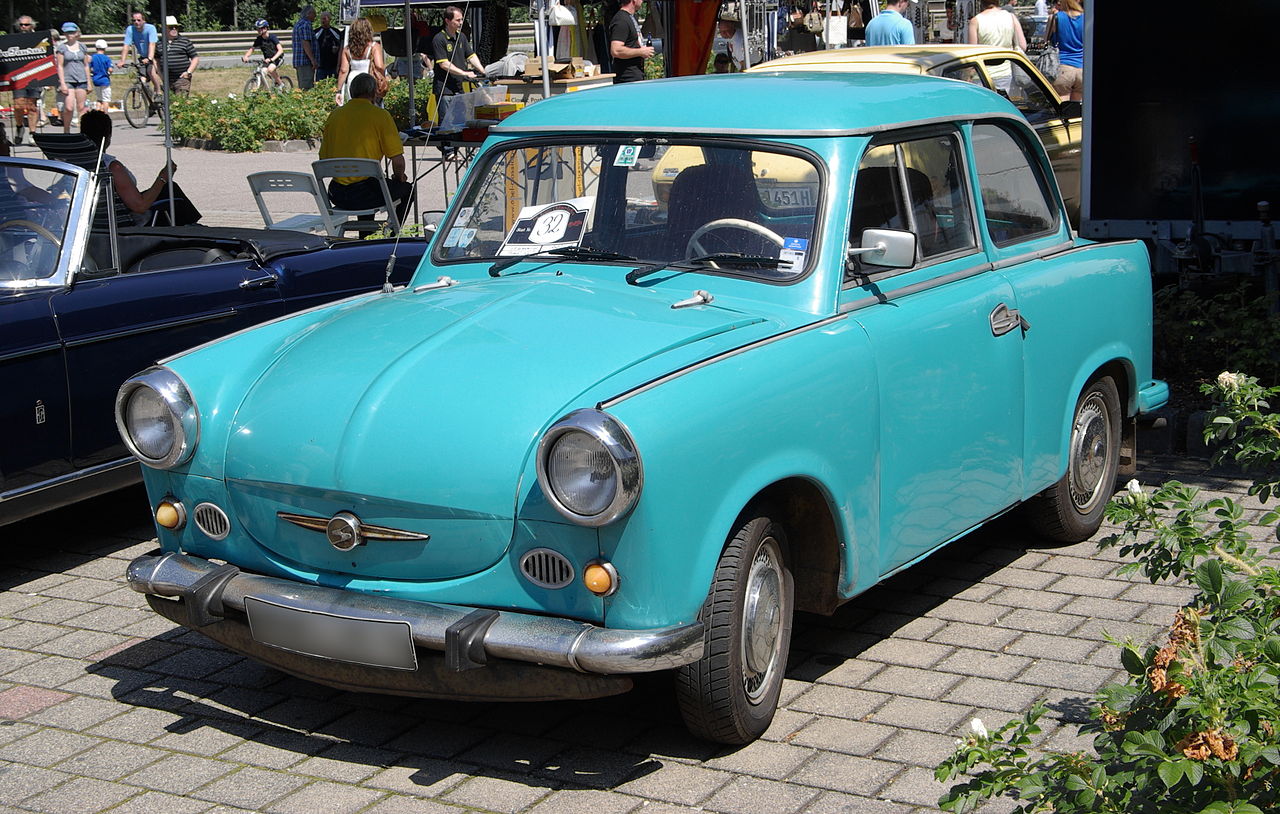 Berthold Werner, CC BY-SA 3.0, Wikimedia Commons
Berthold Werner, CC BY-SA 3.0, Wikimedia Commons
Selling The Trabant In West Germany
Although the DDR kept its Deutsche Mark in parity with the West German Deutsche Mark, the cost of a Trabant in West Germany was almost half that in the East. The basic model was 3565 West German Deutsche Marks.
 FORTEPAN / Romák Éva, CC BY-SA 3.0, Wikimedia Commons
FORTEPAN / Romák Éva, CC BY-SA 3.0, Wikimedia Commons
Colors
The colors available were neutrals (white, beige and brown) and pastels (blue and green). Pastels were chosen as they were easier to repaint. The Trabant P 50 was also sparse inside, with no tachometer, no fuel gauge, and no seat belts or turn signals.
Production
Perhaps the most infamous aspect of the Trabant P 50 was its engine. It was a two-stroke engine, as opposed to the standard four-stroke engines in most cars. This made the engine very weak, with a maximum 60 mph capacity.
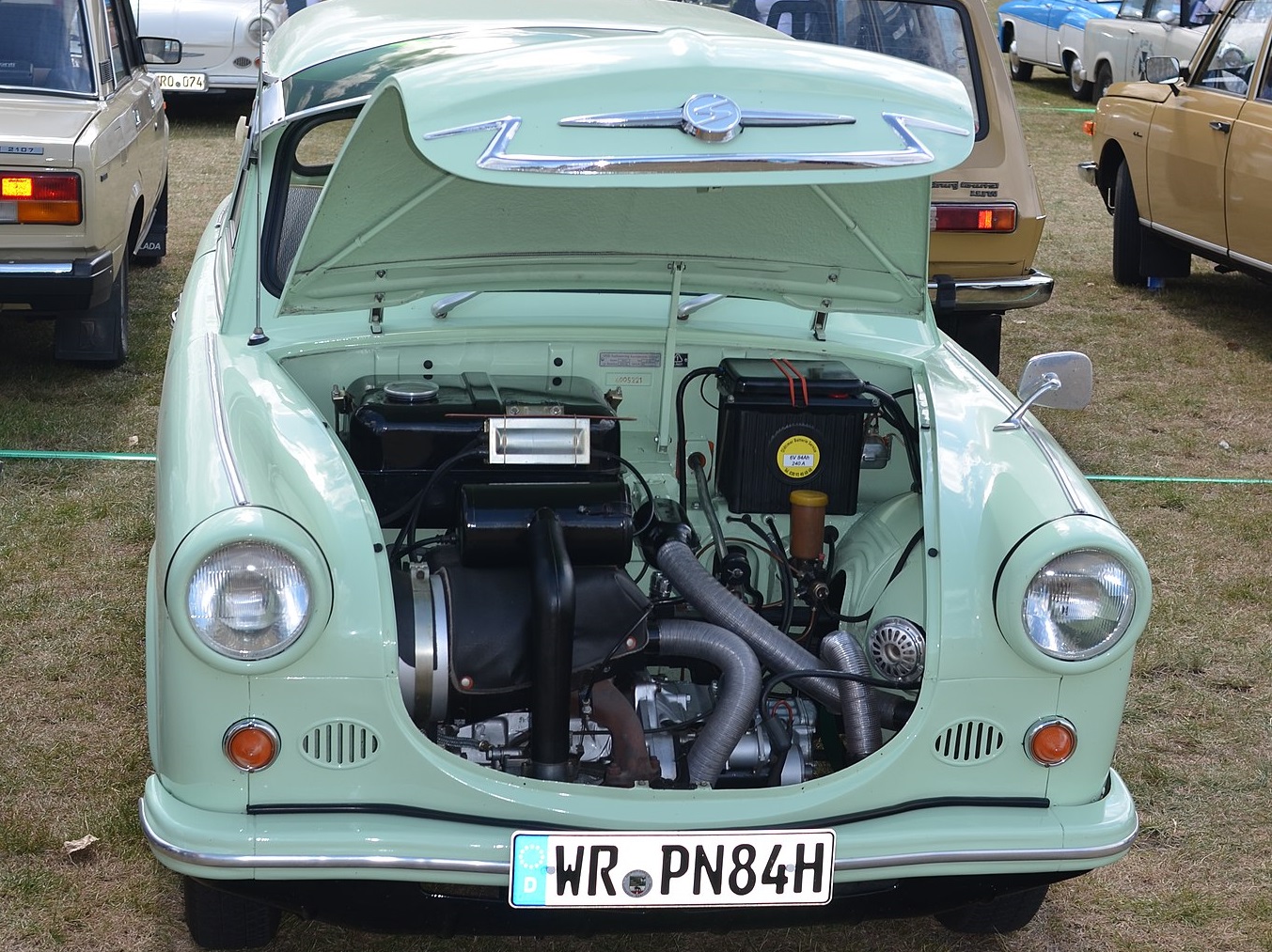 Torsten Maue, CC BY 2.0, Wikimedia Commons
Torsten Maue, CC BY 2.0, Wikimedia Commons
The Engine
The Trabant was notorious for the amount of smoke it produced. The engine had no oil pump, so it was lubricated by its own fuel, which was an oil and gas mix much one uses for a lawnmower. If one coasted in gear, as opposed to constantly shifting gears, this would cause insufficient lubrication and the engine would fail.
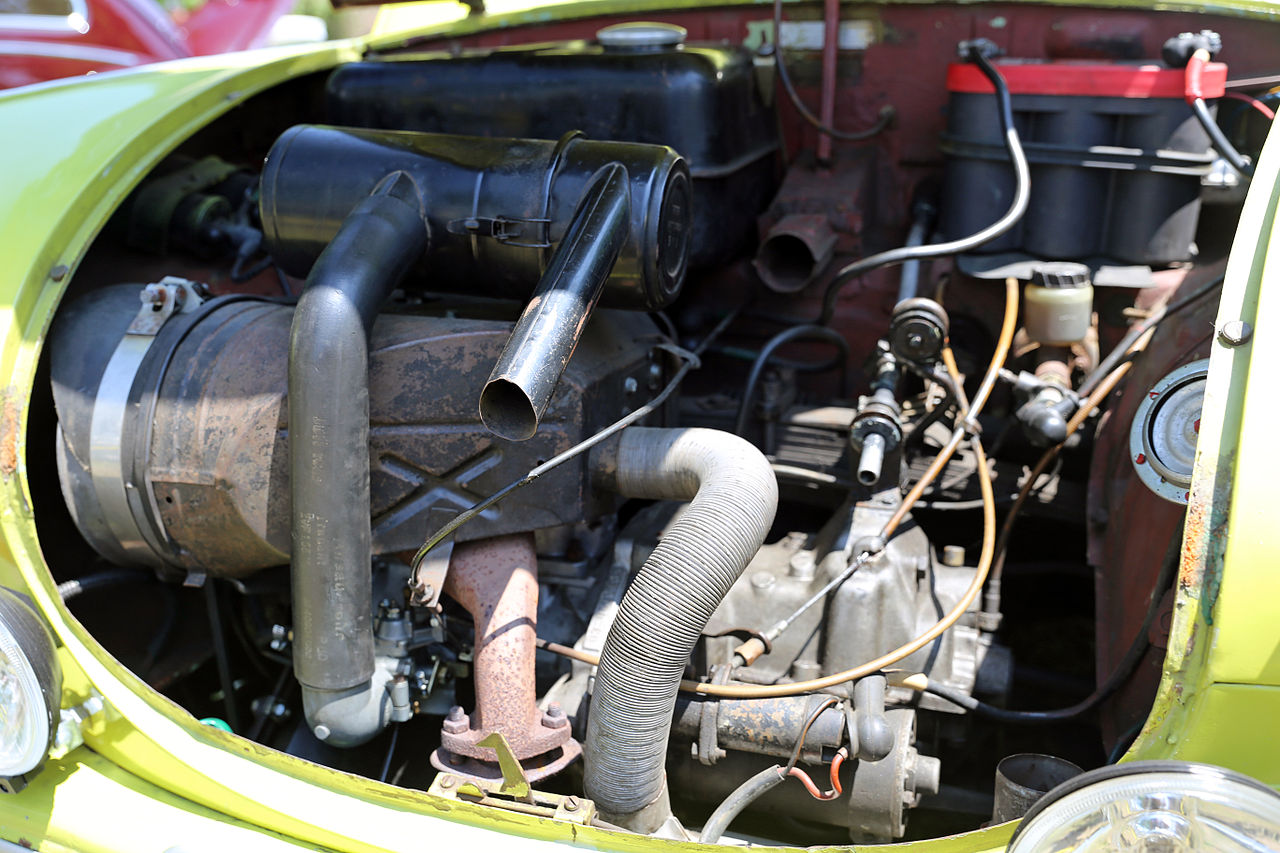 Mr.choppers, CC BY-SA 3.0, Wikimedia Commons
Mr.choppers, CC BY-SA 3.0, Wikimedia Commons
The Fall Of The Trabant
With its reputation for being poorly made, each new model of the Trabant attempted to improve on the original Trabant P 50. However, the Trabant continued with the two-stroke engine which was not fuel efficient for a car.
 FORTEPAN / Nagy József, CC BY-SA 3.0, Wikimedia Commons
FORTEPAN / Nagy József, CC BY-SA 3.0, Wikimedia Commons
Production Difficulties
Production difficulties made it difficult to obtain a Trabant in East Germany. The waiting time was around 10 years. Rumors of parents signing their newborns up for a Trabi circulated.
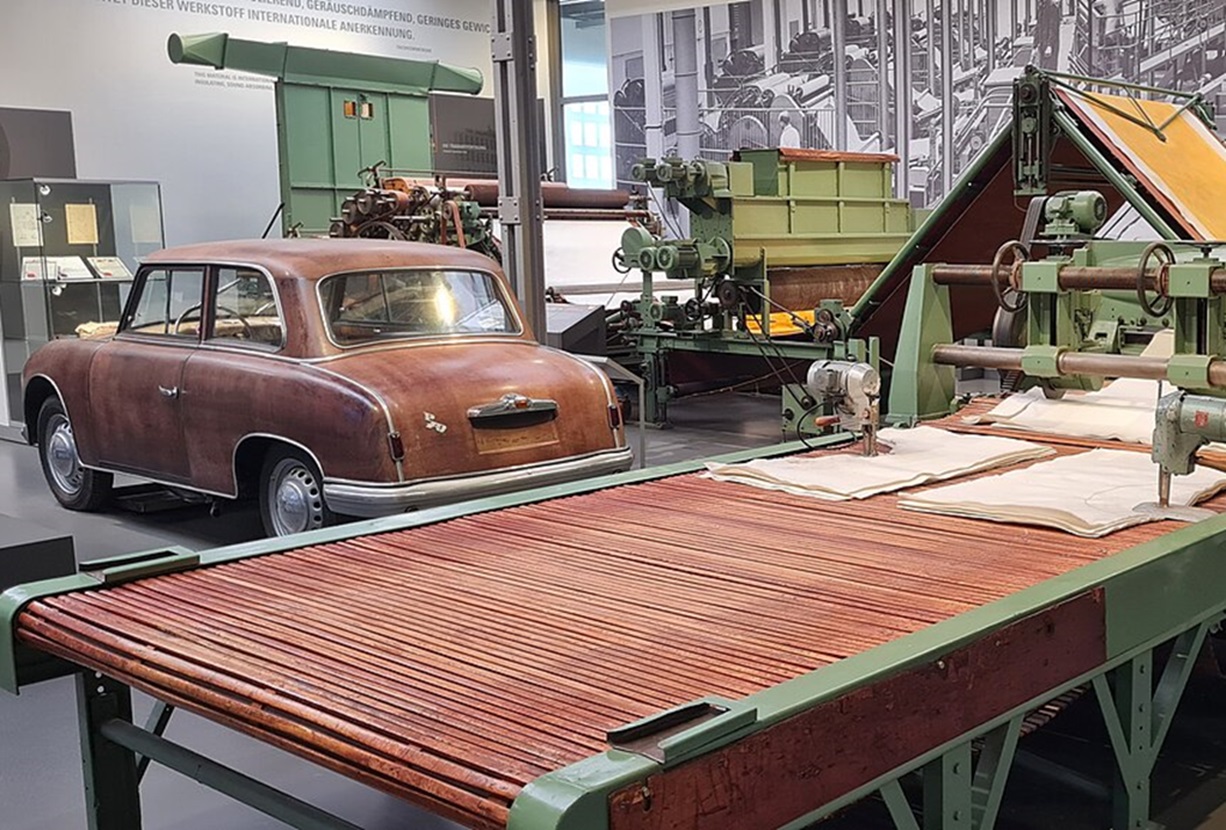 Derbrauni, CC BY 4.0, Wikimedia Commons
Derbrauni, CC BY 4.0, Wikimedia Commons
The Fall Of The Berlin Wall
With the fall of the Berlin Wall in 1989, East Germans poured into West Berlin, often driving their Trabants. Some were sold to curious West Germans for next to nothing, while many were simply abandoned on arrival in the West.
After The Wall
The manufacturer of the Trabant, VEB Sachsenring, attempted to update the Trabant for the new post-communist reality and introduced the final Trabant model, the Trabant 1.1. It featured a four-stroke engine made by Volkswagen, but this change was too late to save the otherwise outdated car.
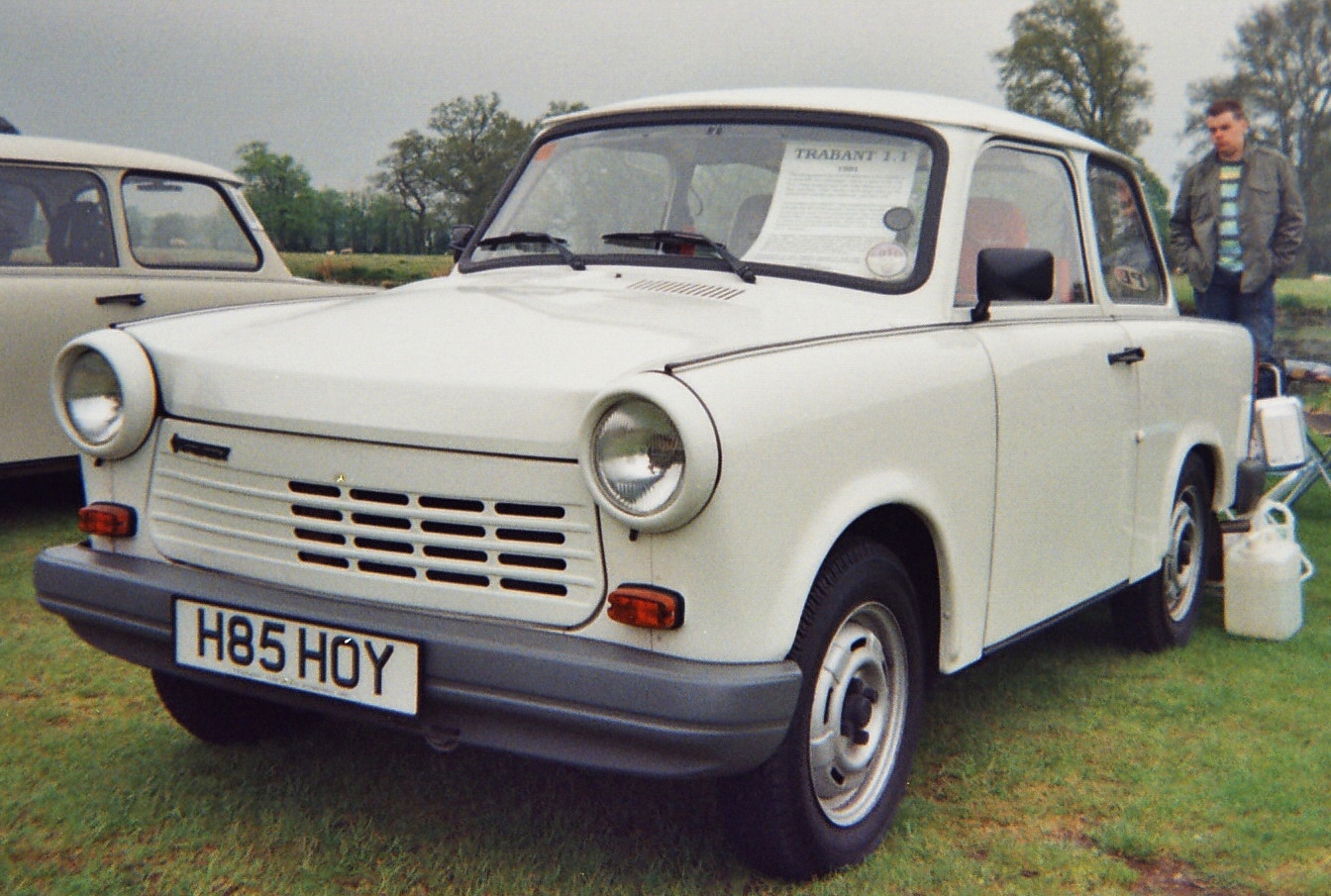 Asterion, CC BY 2.5, Wikimedia Commons
Asterion, CC BY 2.5, Wikimedia Commons
The End Of The Trabant
The production of the Trabant lasted one more year before coming to a complete halt. With German reunification in 1991, many East German companies were partnered with Western companies, while many others just ceased to exist. There was no market for Trabants in the post-communist world as West German, French, and Japanese cars entered and dominated the Eastern European market.
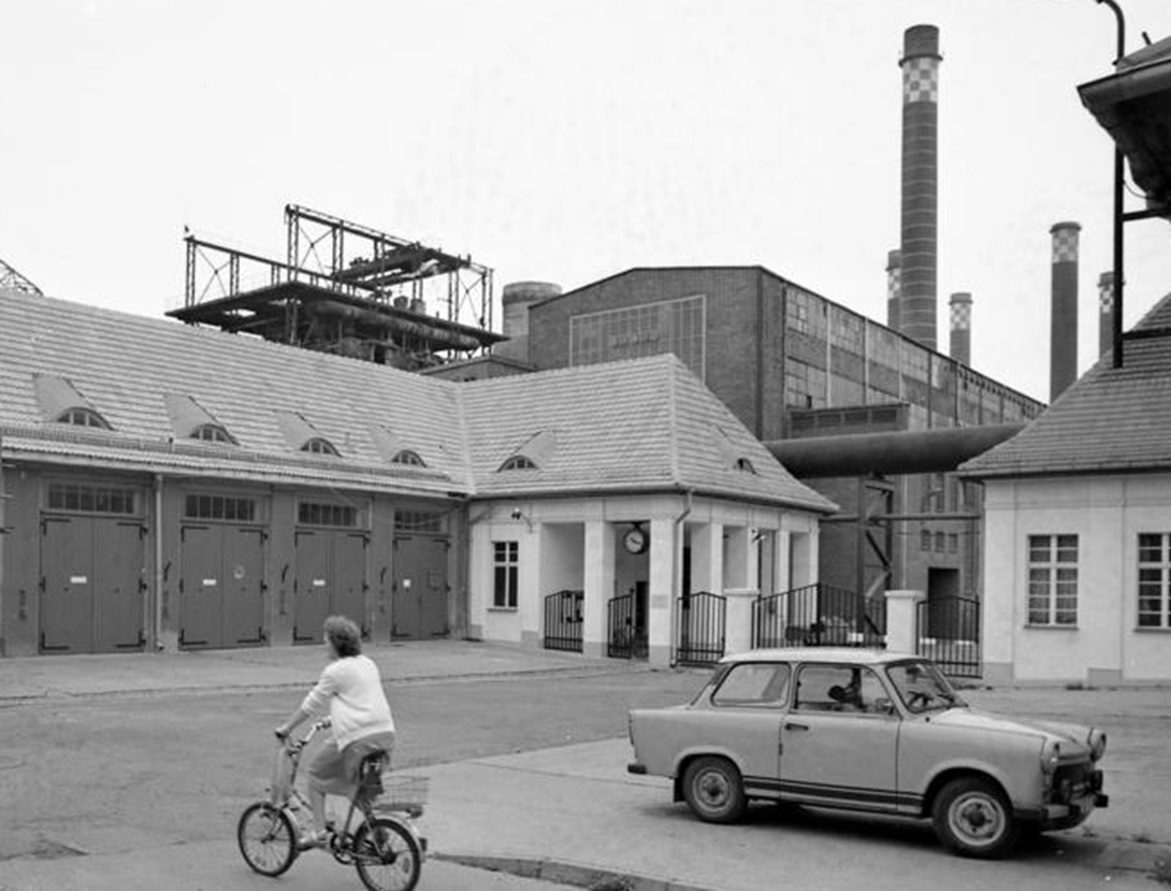 Bundesarchiv, CC-BY-SA 3.0, CC BY-SA 3.0 DE, Wikimedia Commons
Bundesarchiv, CC-BY-SA 3.0, CC BY-SA 3.0 DE, Wikimedia Commons
Pop Culture
The Trabant entered pop culture in the reunified Germany. Seen as an embarrassing symbol of communism, there were even a pair of films, Go Trabi Go and Trabi Goes to Hollywood which centered around Trabants as plot devices.
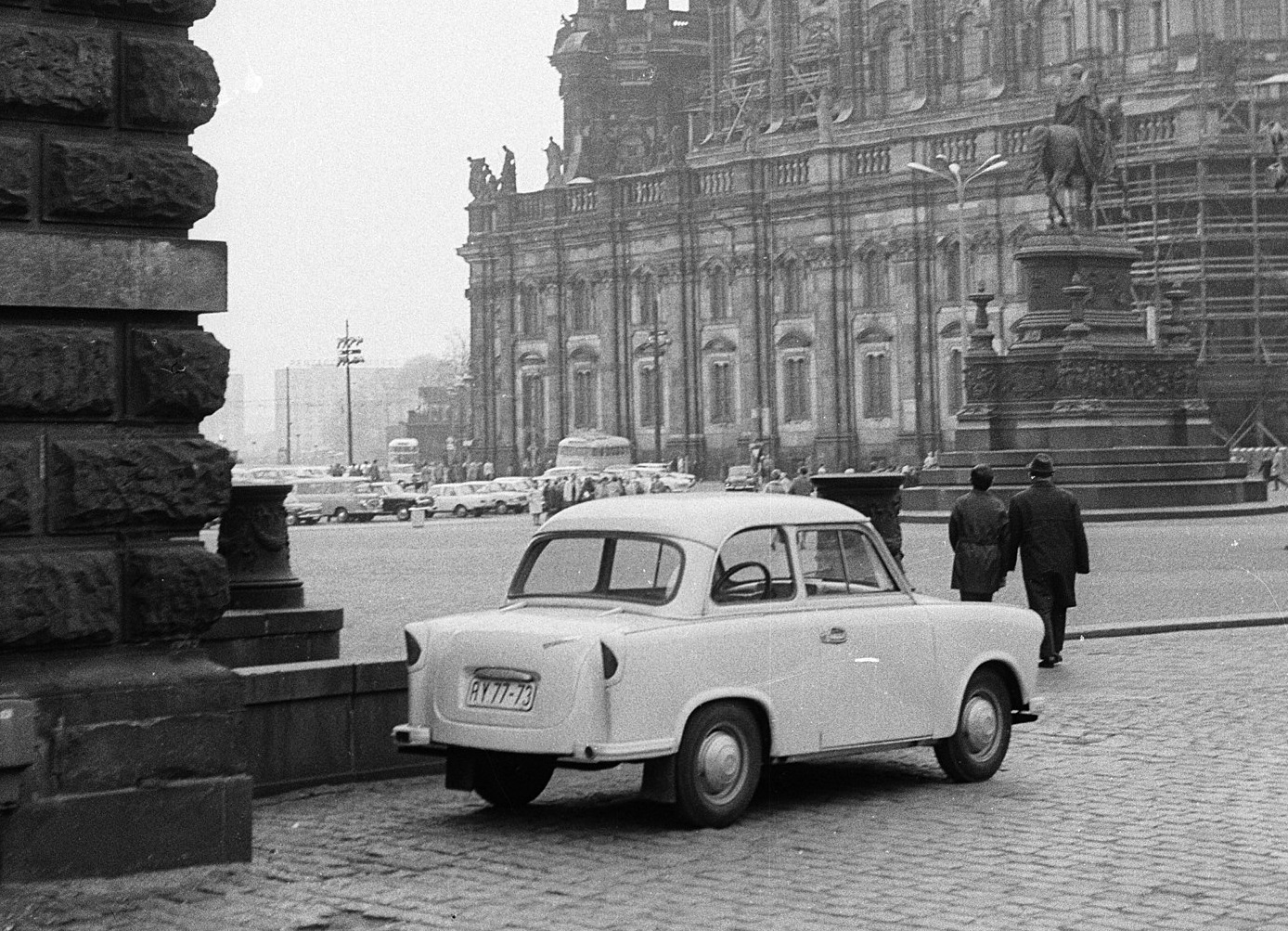 FORTEPAN / Lencse Zoltán, CC BY-SA 3.0, Wikimedia Commons
FORTEPAN / Lencse Zoltán, CC BY-SA 3.0, Wikimedia Commons
A Cult Following
There was, however, another side to this. Regardless of its image, the Trabant developed a cult following. Trabis were easily available for next to nothing, and in the earliest days of reunification, they were available for free all over the countryside, abandoned by their owners.
 FORTEPAN / Magyar Pál, CC BY-SA 3.0, Wikimedia Commons
FORTEPAN / Magyar Pál, CC BY-SA 3.0, Wikimedia Commons
Collectors’ Clubs
Collectors’ clubs sprung up in Germany and elsewhere, where enthusiasts maintain the cars. Trabants are now a symbol of nostalgia for the now-gone DDR. Many aspects of life in the former East Germany have been revived in what is called Ostalgie, a nostalgia for aspects of life in East Germany.
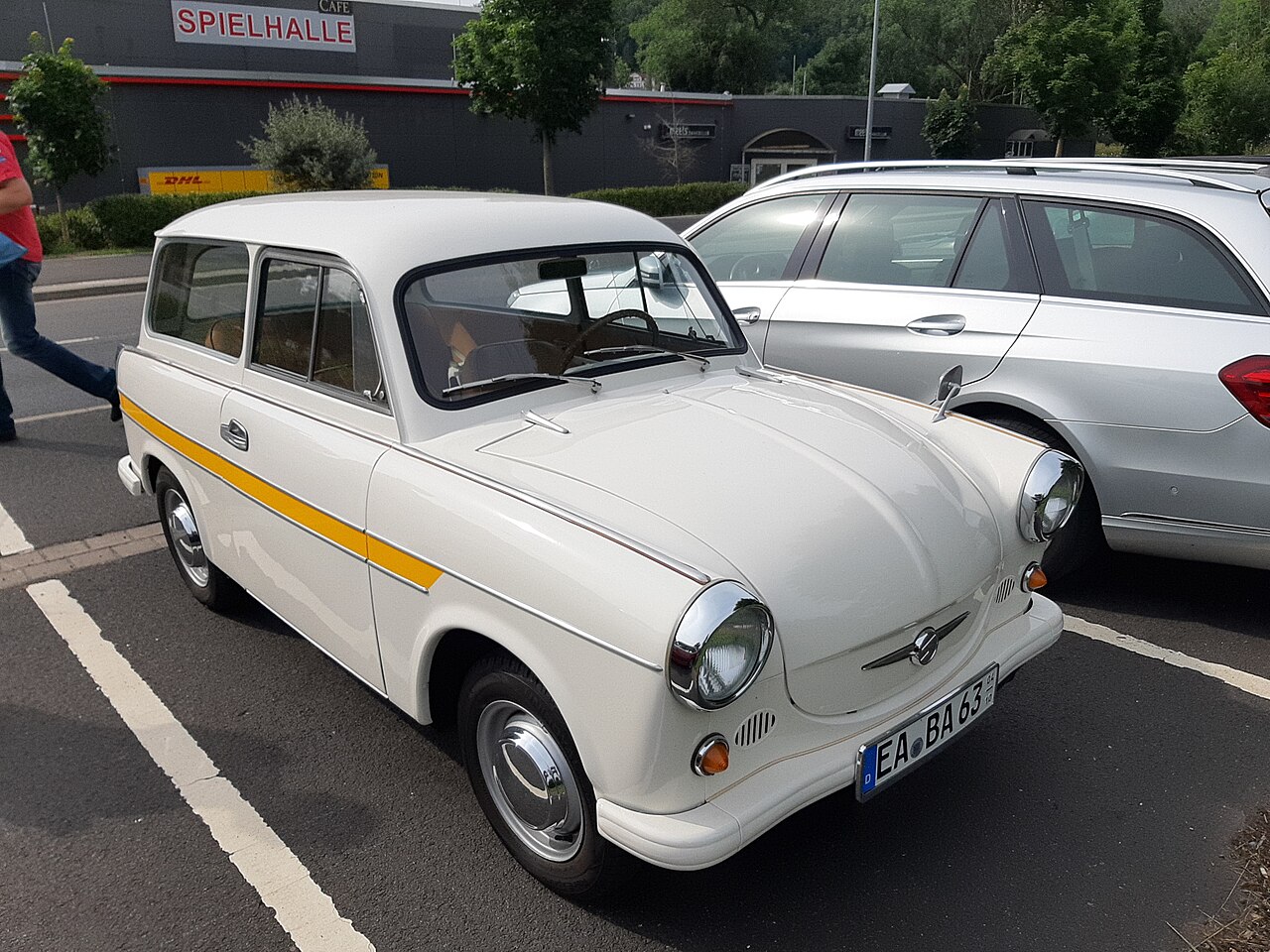 Dk0704, CC BY-SA 4.0, Wikimedia Commons
Dk0704, CC BY-SA 4.0, Wikimedia Commons
Ostalgie
DDR nostalgia, as viewed as Ostalgie, is not about the difficulties of integrating into a market economy for many East Germans. Rather, it’s a sometimes ironic (but not always) longing for a certainty in East German life. East German foods and products have been revived in restaurants and in styles and décor.
Reviving East German Culture
Often, this Ostalgie is expressed by people who did not even live in East Germany or were born after reunification. This nostalgia for something not lived is common and the sometimes rye takes on East German culture reflect a desire to return to a vaguely defined era.
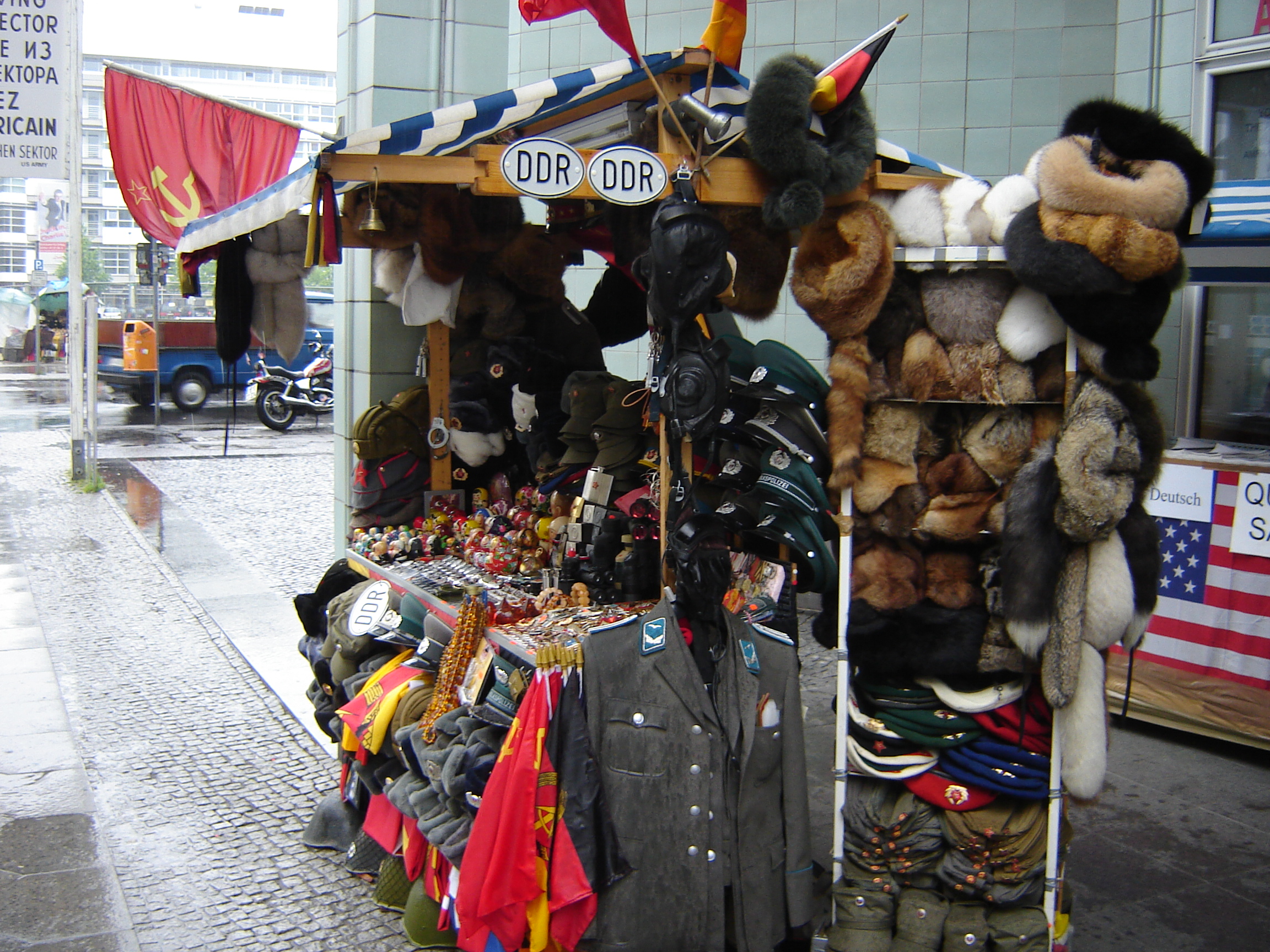 Ich, Public domain, via Wikimedia Commons
Ich, Public domain, via Wikimedia Commons
The Trabant Today
The Trabant is firmly part of this Ostalgie. Despite its reputation—Edmunds, an online car review aggregate, lists the Trabant as the ninth worst car of all time—driving a Trabant from East to West Germany was once seen as a symbol of freedom. Now Trabants are treasured as peculiar antiques and representative of a strange 40-year period.


